I was emailed by Ed the CMP intern who was looking for 1st Year CMP students to help with the 2nd Year CMP Convergent Media Assessments. I was able to to help on the second day on Wednesday the 10th of April. I pushed my self to help to gain more experience with photographer cause I felt the more I have exposed to it the more confidence I will achieve. Usually, I would only accept brief to videography. But this is one of the main reasons I had chosen to do this course, Contemporary Media Practice. The ability to learn and gain experience in each aspect of media.
The Breif: The primary focus of your photographing is to record the work created by students. Your photographs will be used as documentation for external examiners who moderate your work. If you do one thing when you are photographing it must be DOCUMENTING the work students have produced.
For installations
- Photograph the work from various angles
- Photograph the work at various different stages
- Photograph Detailed closeups as well as wide angles
For projection pieces
- Photograph the video at various stages
- Small video clips of the work will be helpful
For performative pieces
- Photograph the performance through various moments.
Approach this as if you are a crime scene photographer, and you should get the drift. If you have any questions do let me know.
The main Brief was to take photos of the installation at all angles. To aid the external examiners to understand the projects.
Going through this experience it was very different from the Stoot for my brief in the Studio. It was more stressful because I was unaware of what will happen during the day. It was my responsibility to take the correct photos with the correct composition.
On the day I had to document 11 Different grroups of works in a variety of rooms. I think achieved the brief to my best ability and it was an excellent experience to gain more exposure to photography.
I took a total of 418 photos. Possible I may have taken more than I needed but I thought as it is documenting students work it was better to take more to not miss something important.
Here is a selection of photos from the day:
As it was my first experience with photography within a studio setting. From my previous experience as a videographer. I have gotten used to taking as much material to edit down later. To not miss a moment. I had learned a habit that when ingesting footage I would mark which moment were worth it when others were not. I was not sure how to convert habit I had created for video in the context of photography. It is possible that my brief was too open-ended that it made it difficult choosing the correct shots.
While I was shooting in the studio I wanted to show I woman transition from a girl phase into a woman. How hair, clothes and accessories can change someones social status and character. I believe as a whole I tried to keep true to this brief. But I easy for me to move away from it in search of something aesthetically pleasing. Here the question would arise. Why is this photo so nice. Why is it aesthetically pleasing. why does it work so well? But i couldn't really answer the question of what character does it show. This question might have been difficult because the subject was my Wife. A person that I am very comfortable with and I know very well. It could have been my personal bias that the changes were not significant enough for me. However, these photos were not for me only.
It was hard to select photos for the Brief. I felt a lot of the photos we acceptable, i could not choose between them.
I would have liked to learn to edit raw photos and given tips on basic Raw Photo editing such as how we where given with Video editing software. Because all the photos i talk with raw i think having this editing ability might have help to choose between photos.
Runner Up Photos that i had to give mention and i could not ignore.
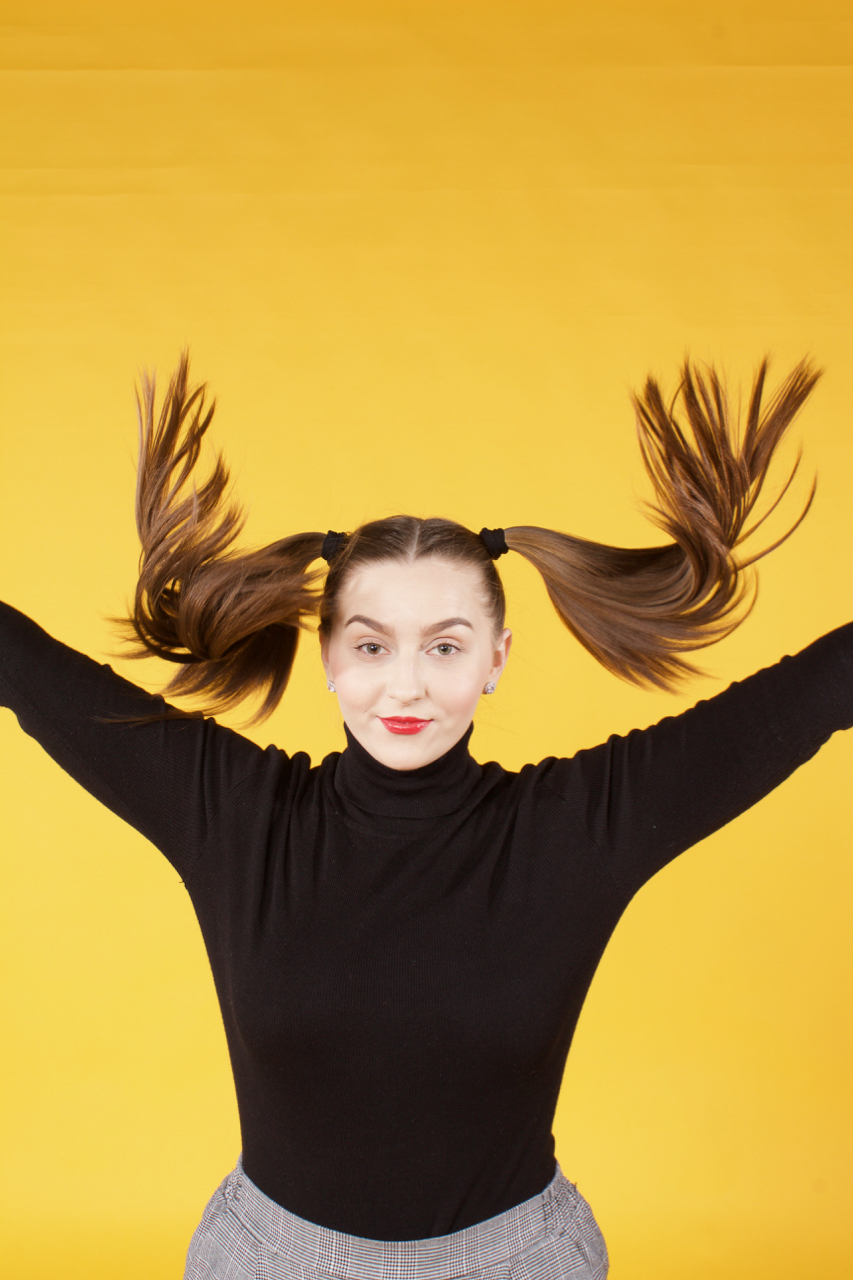
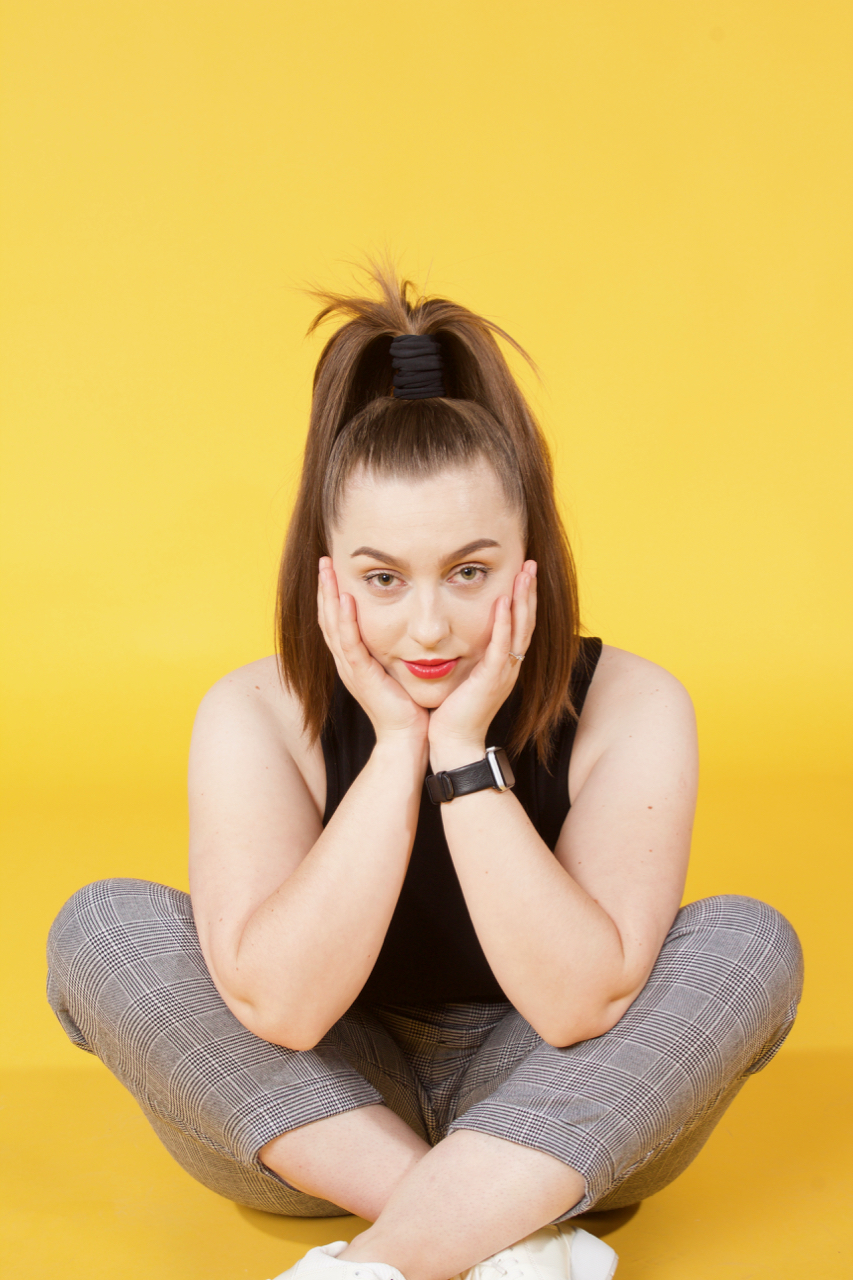
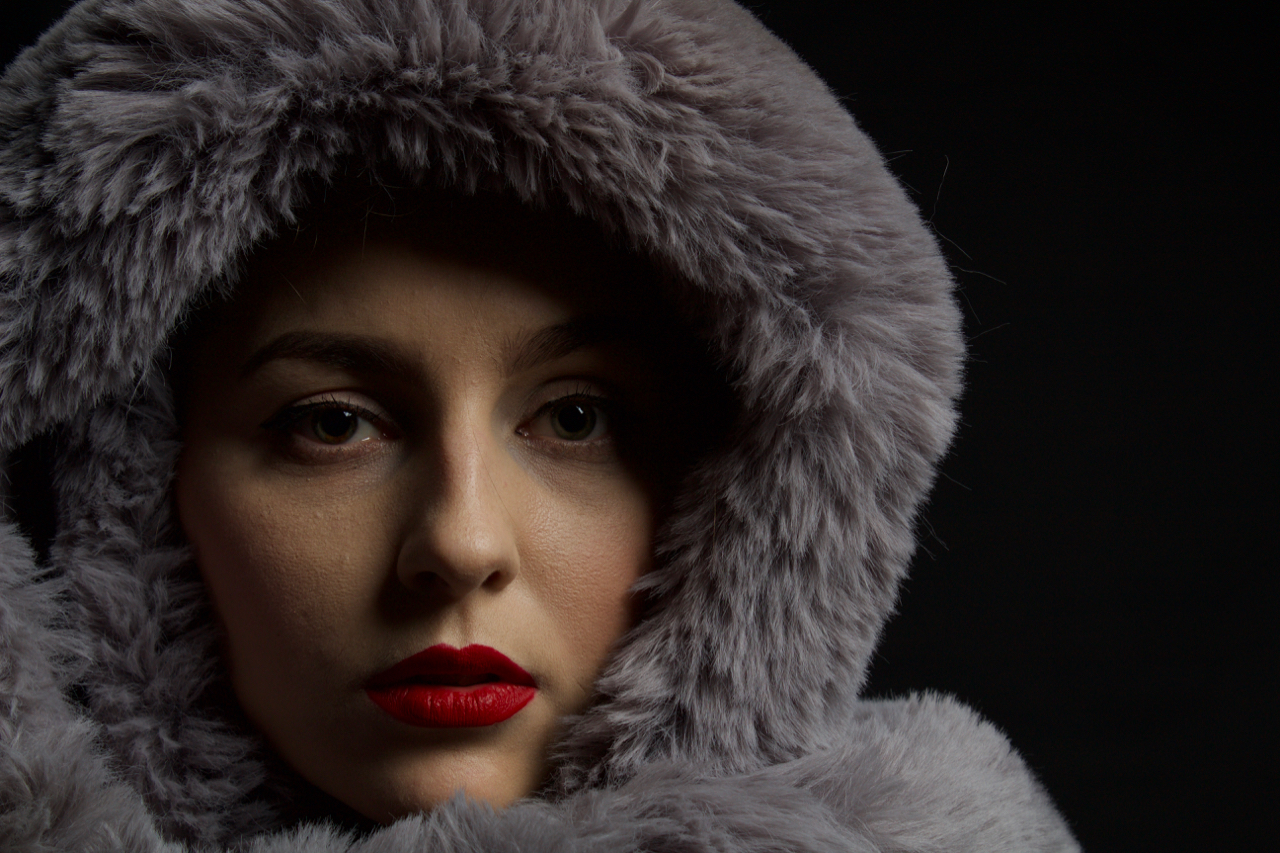
Here are the select Final Photos
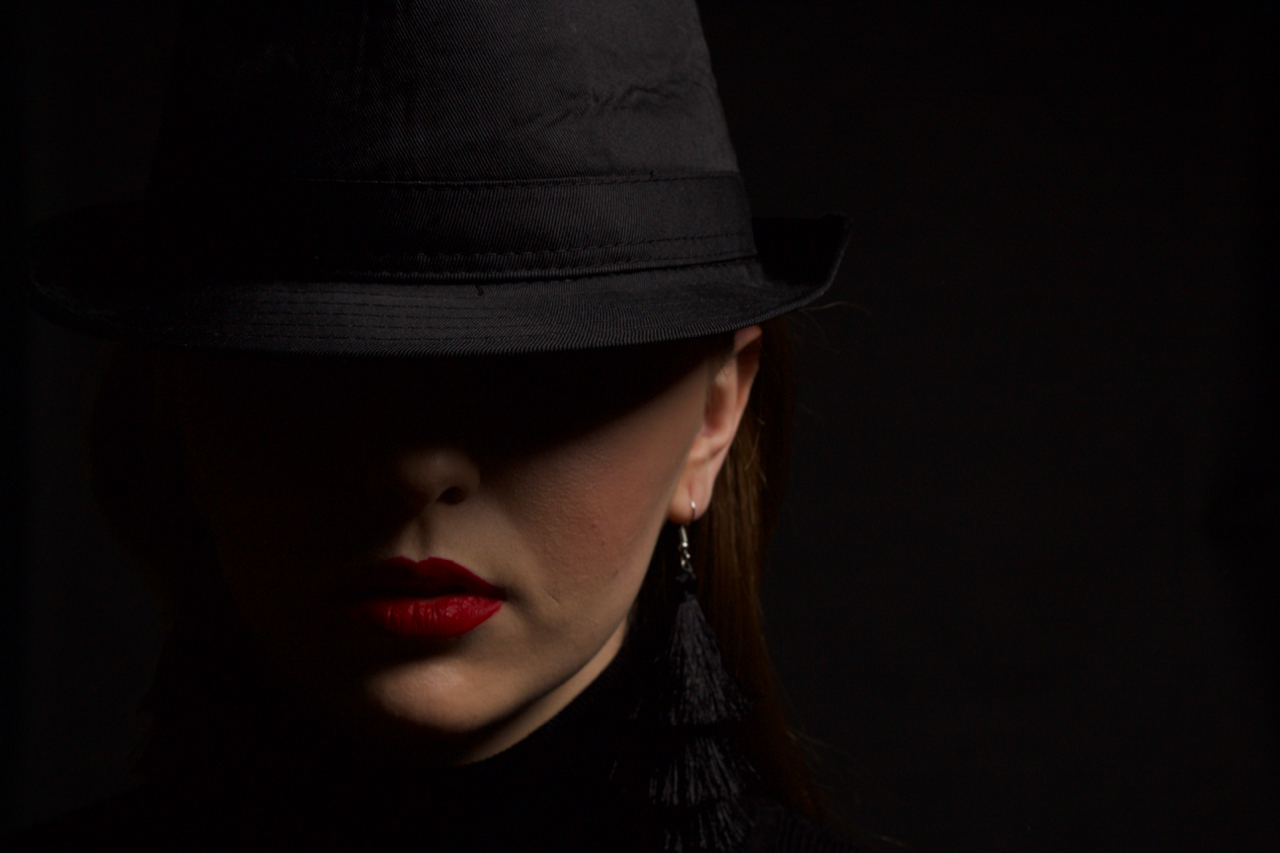
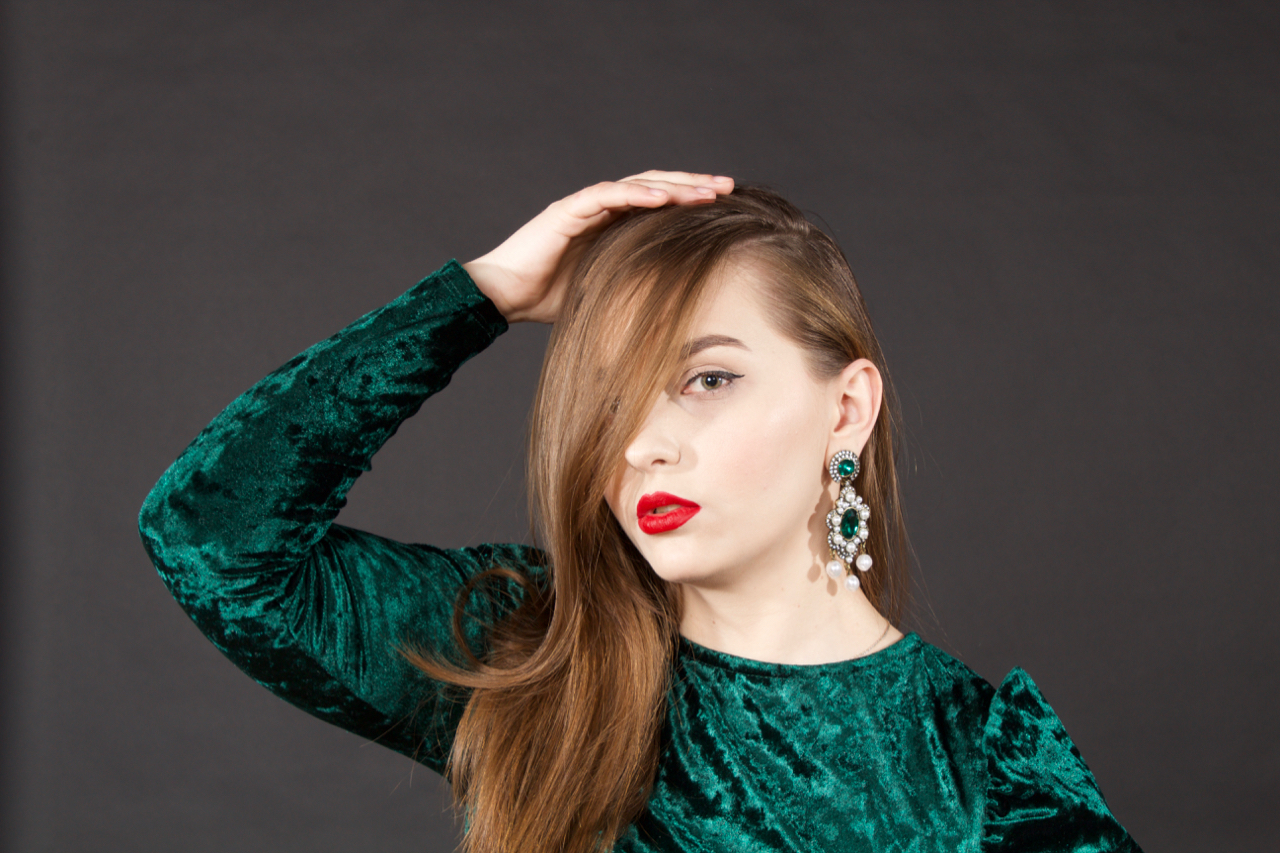
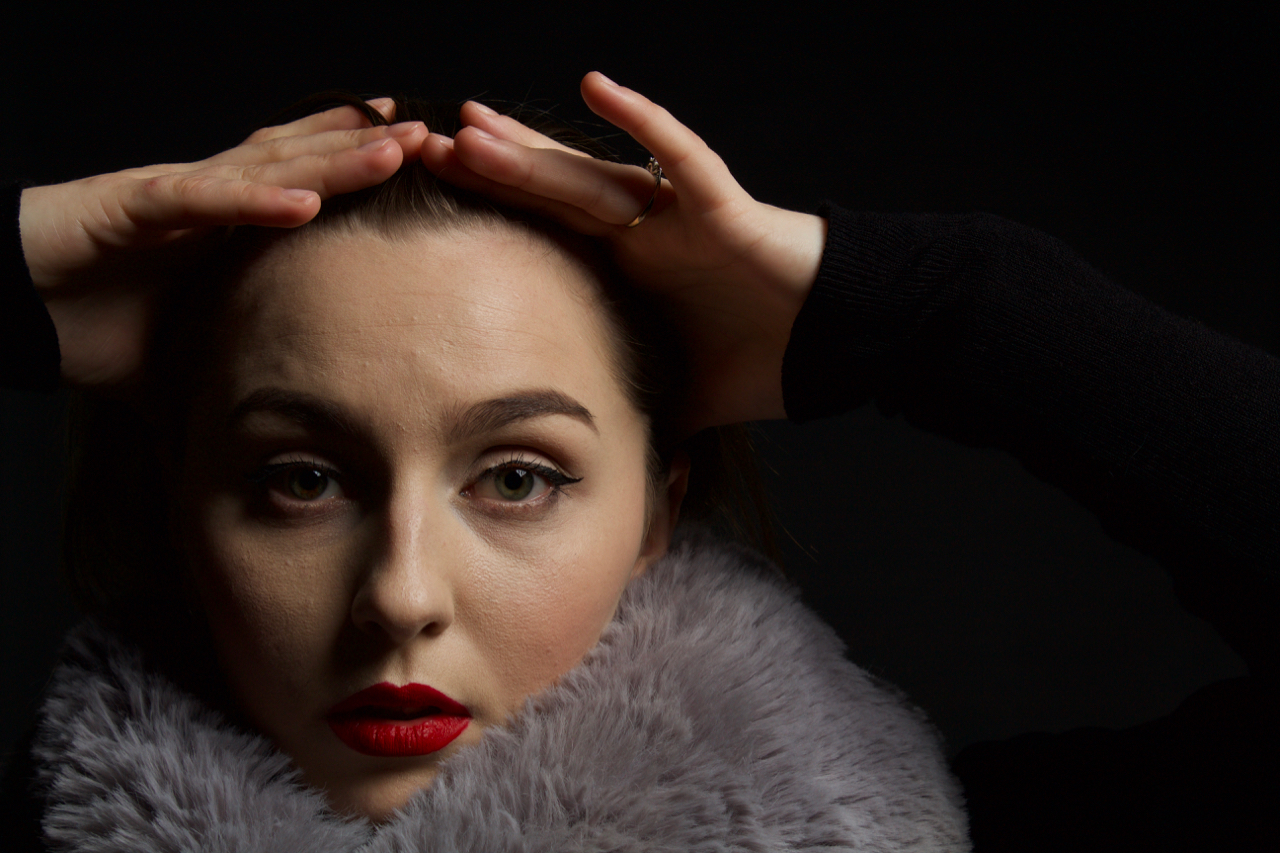
Below are 80 Photographs from the 294 taken on the day. They represent how my ideas changed through the day. From test when I first started to more mood and emotional photos near the end of session.
As it was my first experince with photography with in a studio setting. I have gotten used to taking as much material to edit down later. This came from working as a videographer mainly at wedding. I would
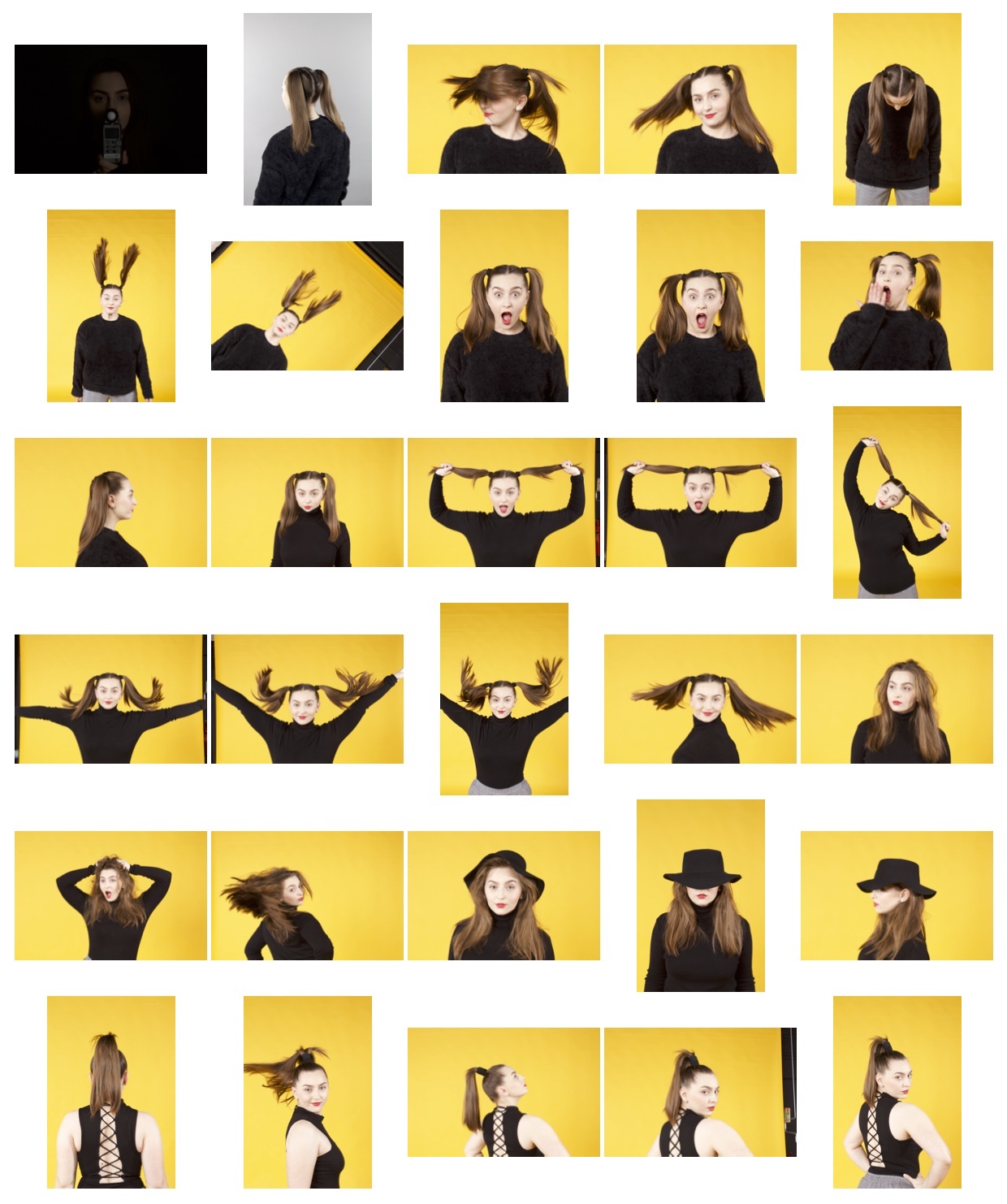
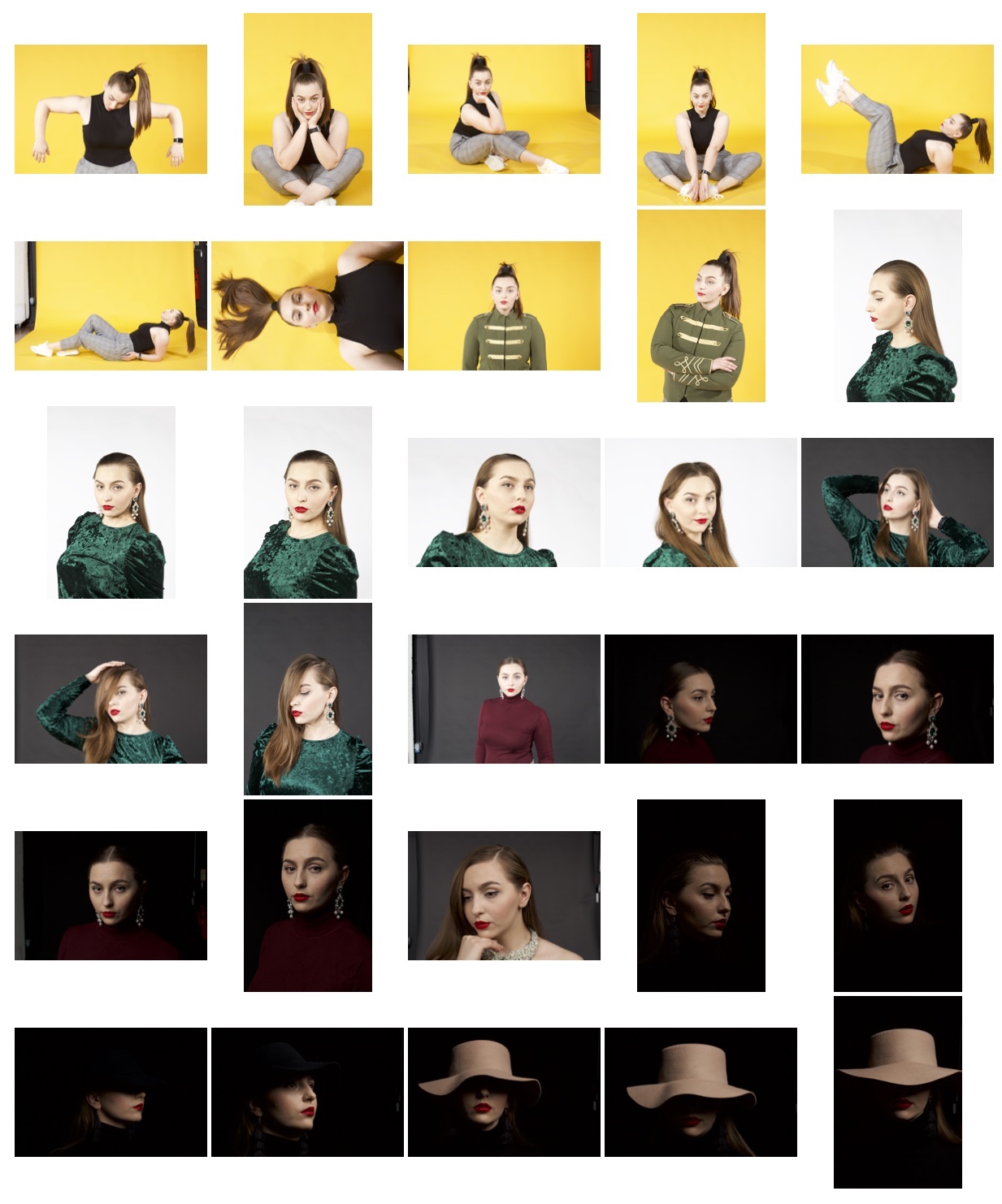
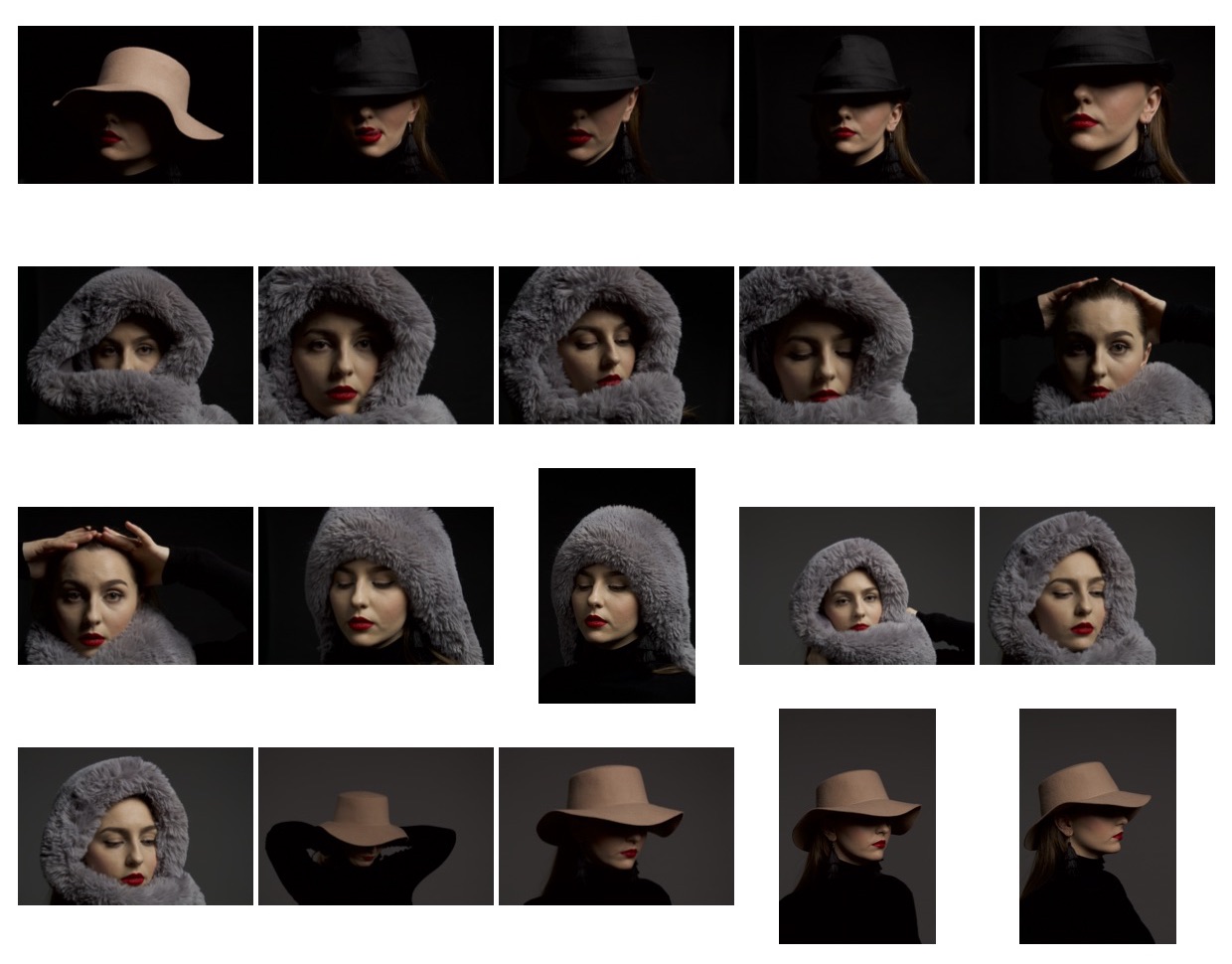
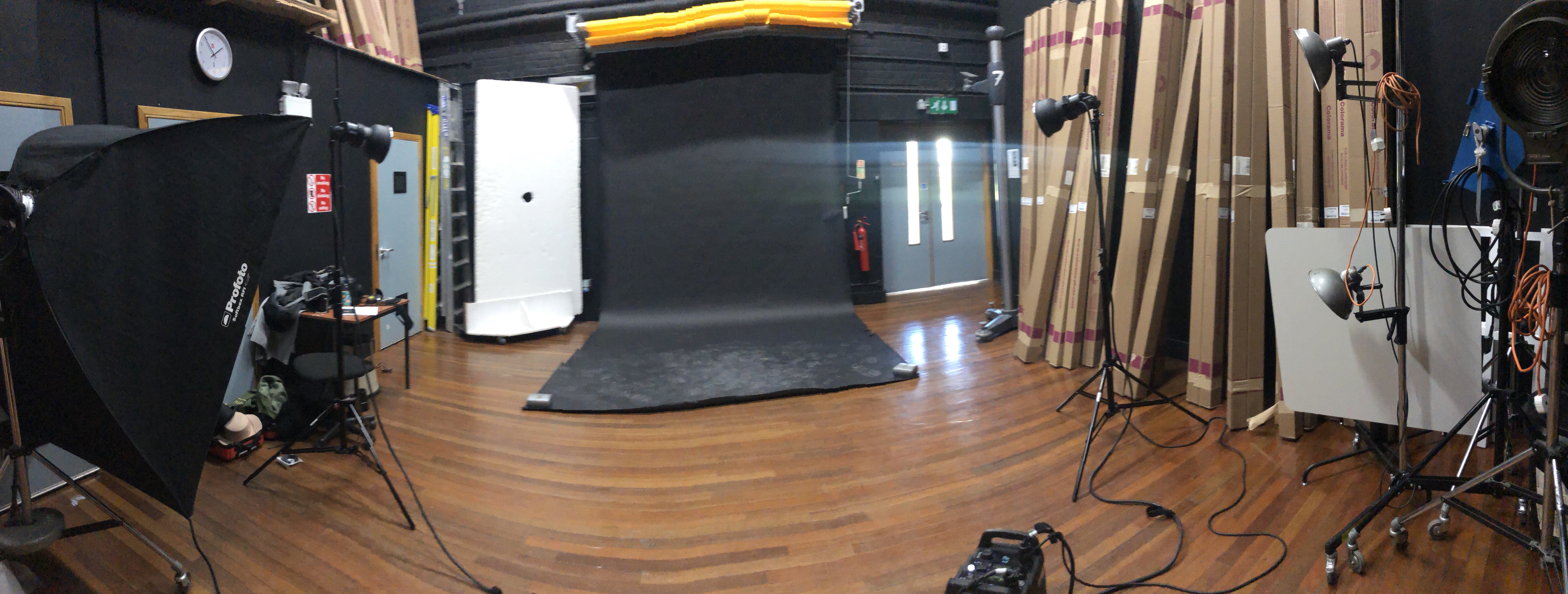
Fortunately for me, my Wife was willing to be the subject for my photographs in the studio. we decided to bring some accessories and different sets of clothes to see what we can achieve. How a change of hairstyle and clothes can change the character of a person. I had put three main aspects will try to follow, Childish character and hairstyle, teenage/young adult, and middle age adult. I wanted to see if it was possible to capture these statuses with just simple change around the same person.
Most of the morning in the studio I spent setting up the camera kit and light as I was working alone on this breif. had did not have any previous experience looking in a studio or for photography. The only experience i had was the induction and workshop play around in groups.
On the day I had some tips from out tutor Julian, who informed me that if I add distance between the background and the subject. the picture would look much nicer. That I should not be shy to use them all the space available within the studio. The only issue I saw was the background roll was not wide enough and in some photos, the edges would appear. But this did not matter to me as the composition and exposure of the photos looked wonderful when I took Julian tip.
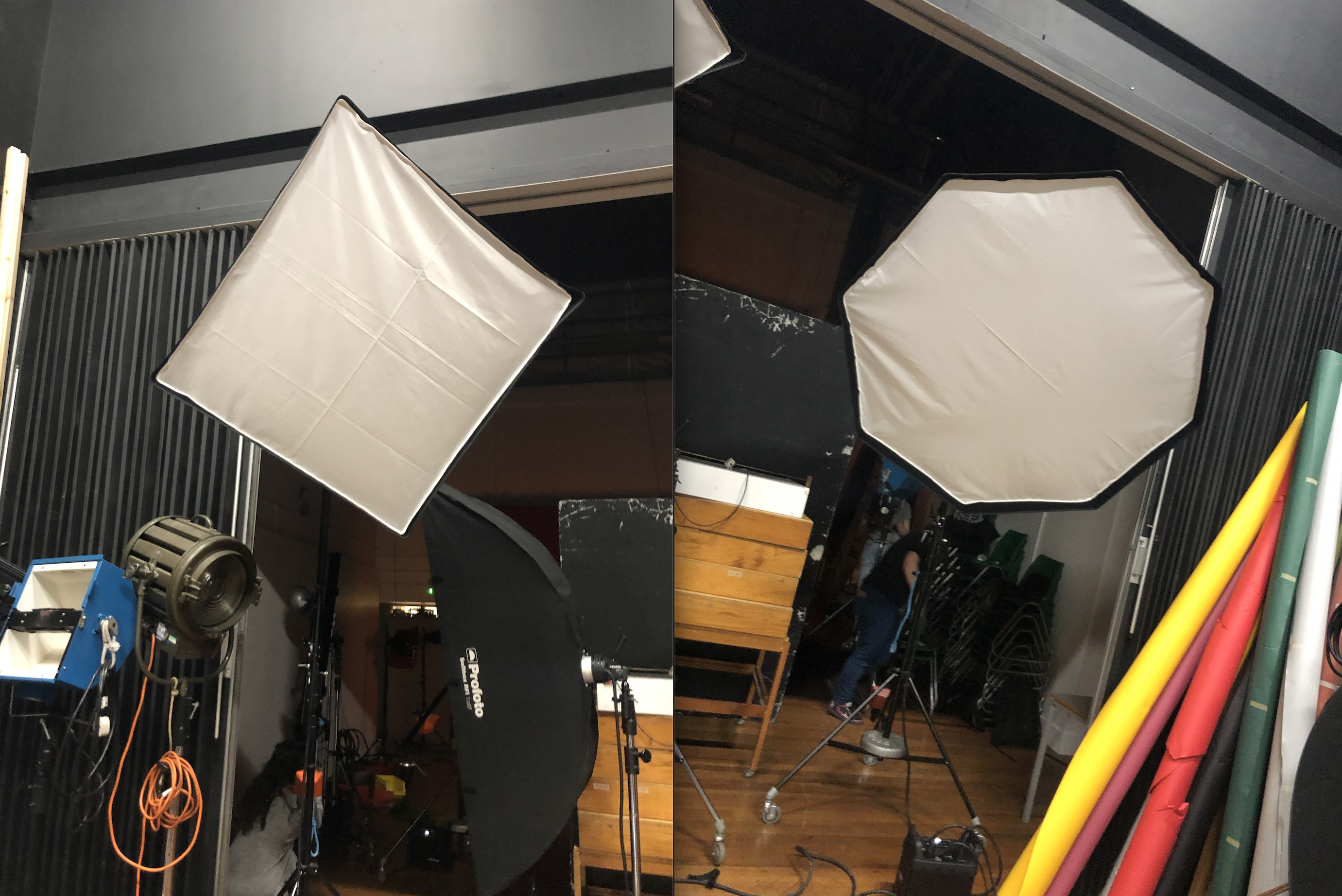
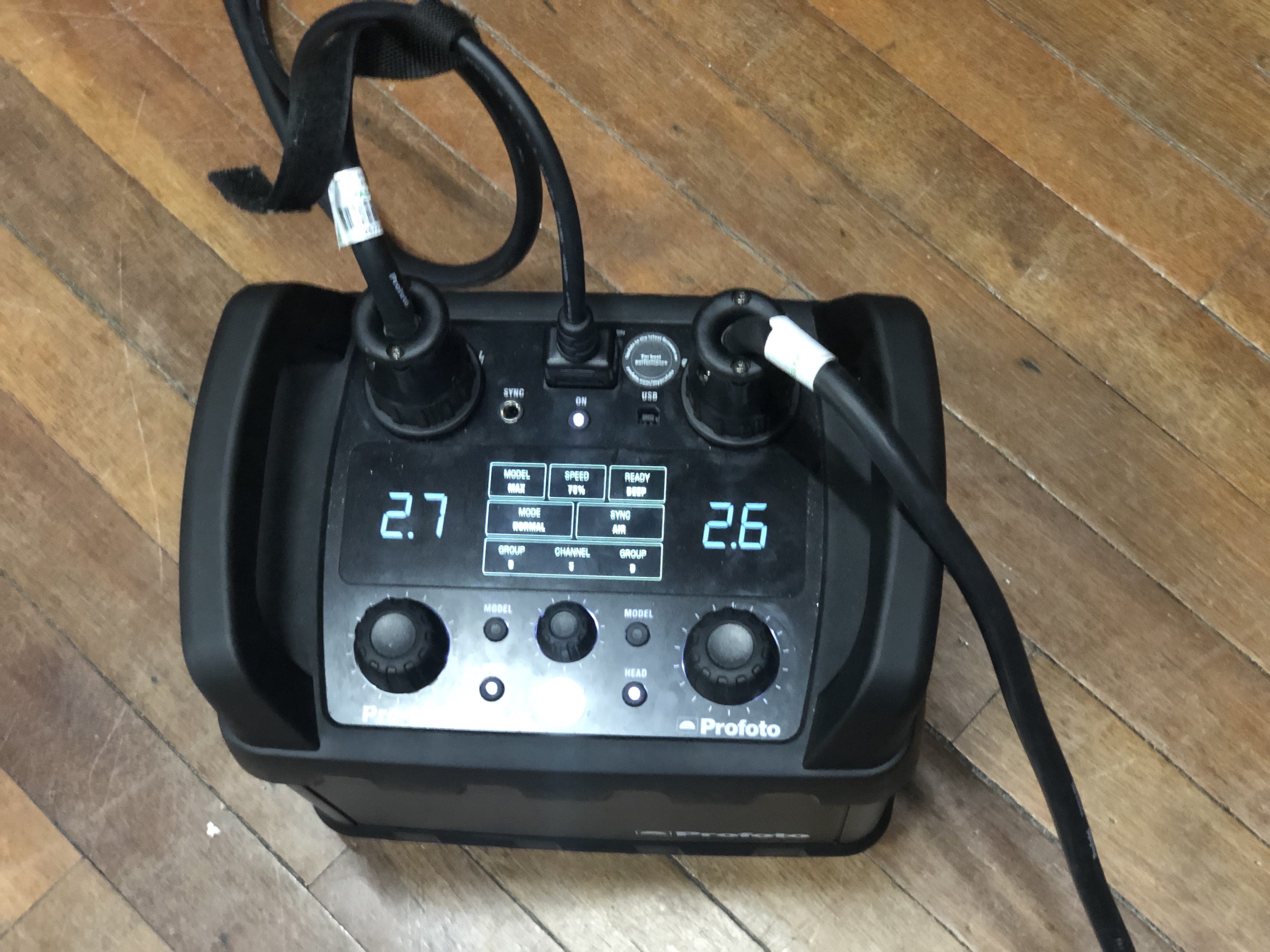
When correcting the distance of the flashlight keeping them balanced between one another. Keeping the background light spill separated from the subject and having enough distance between them the result is more professional. As can be seen from the photos below.
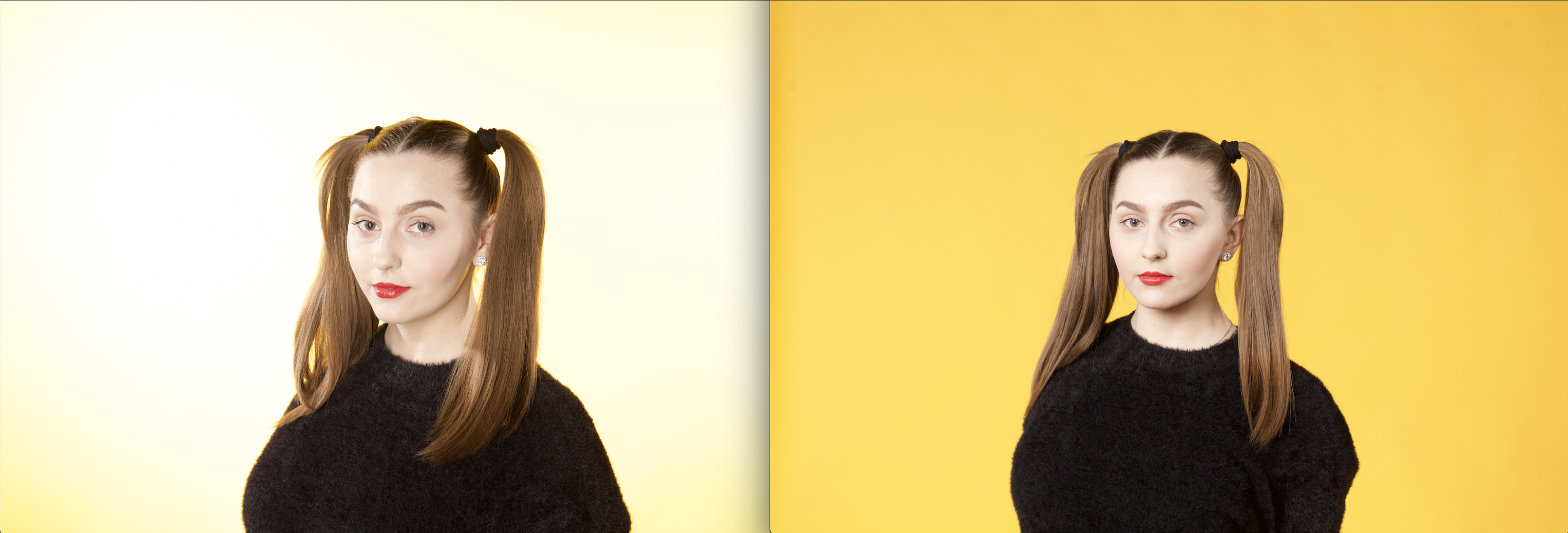
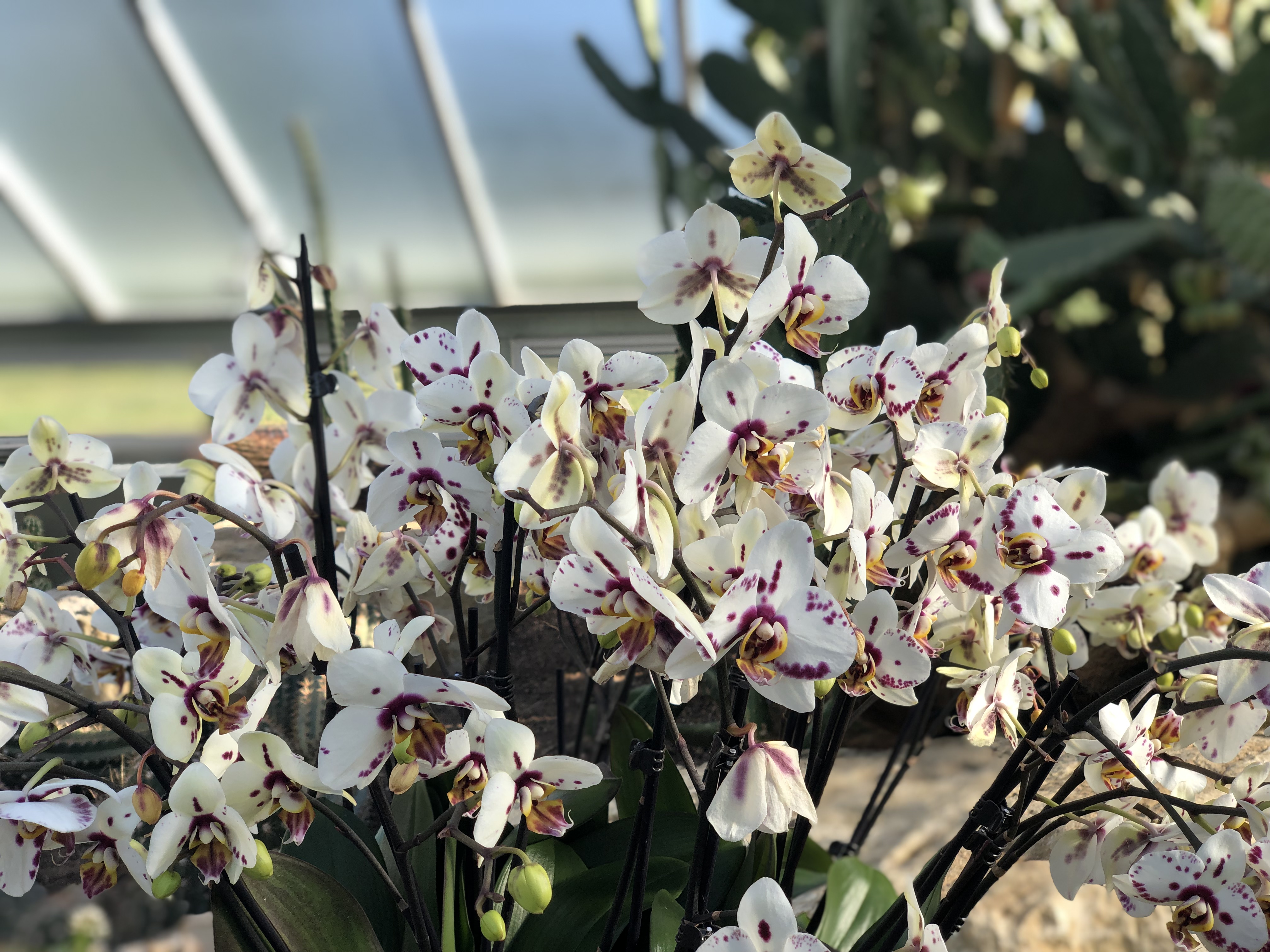
Photography in between nature armed with my iPhone.
For this project as most of the photographs were taken within a studio setting. I wanted to experience with taking photos with natural light and outside. Using natural background.
So i Planned a trip to Kew Botanical Garden with my wife, who happily assisted me to be my subject for the photos, which I am very thankful for.
I wanted to experience with taking photos but not using the face as the main subject of the photos. Using background such as different nature. A subject without showing the facial features to create emotion.
As I was using an iPhone that has an option creates phots using an option called "Portrait mode", this Create a digital Depth of Feild effect around the subject. However because of the iPhone mostly using artificial intelligence to judge the distance and when to start and stop the blur D.O.F. effect this sometimes creates a jagged and hard border between subject and the start of the Depth of field blur. Viewing the photos on a smaller scale such as on a phone screen that mode is acceptable but for anything else, this effect works best under perfect conditions. Fortunately, because this effect is software and not hardcoded in the image data by a lense it can be turned off later within the software.
I personally prefer the photo below on the left. While on the right it is using the software to create a Boke' effect. As i took the photo midst the subject movement the hair has a natural flow to it. A flow the continues to the leaves and branches in the background.
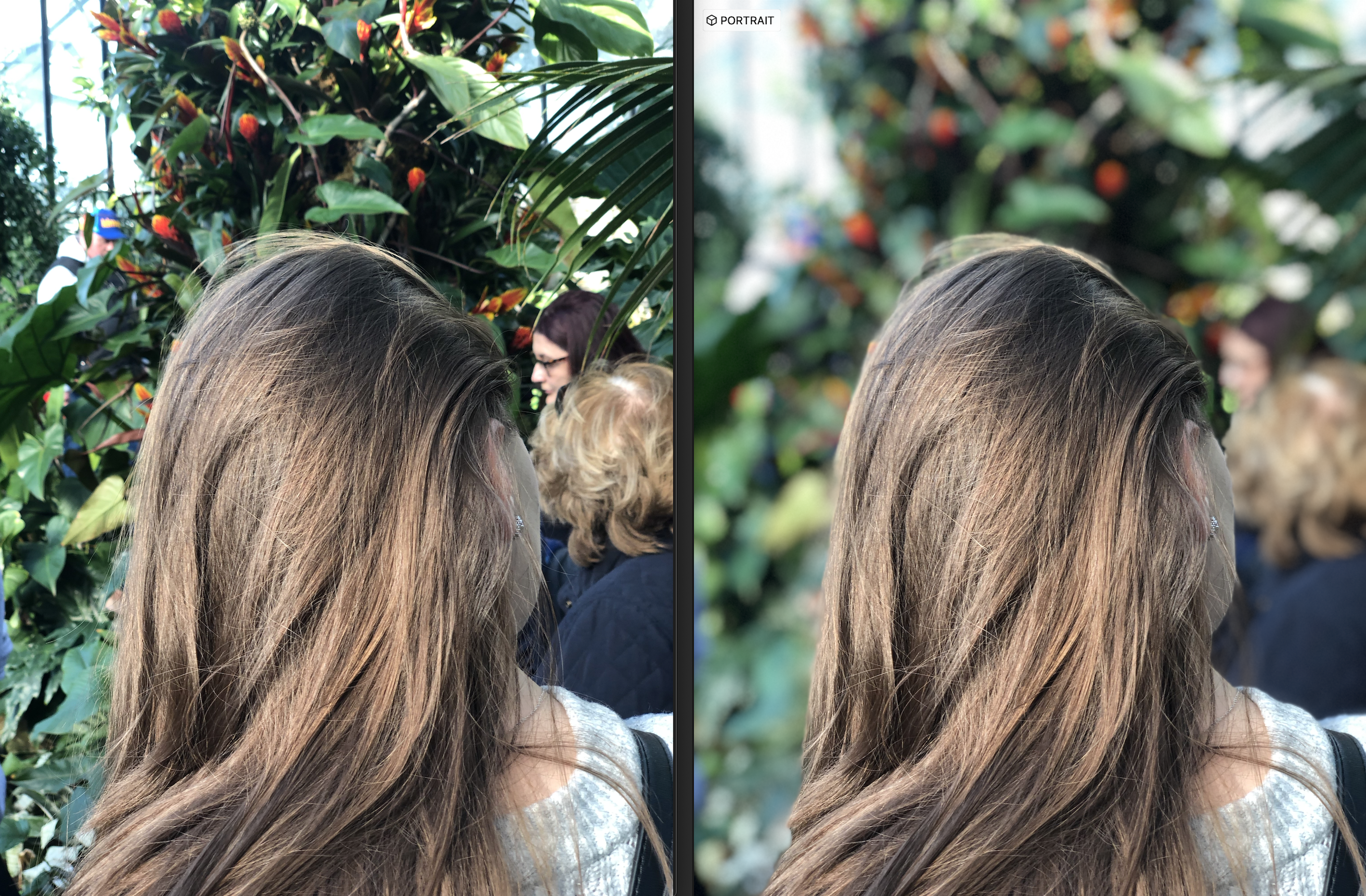
As it was a sunny day, walking underneath large trees and plam trees, the sunlight when shin through between the leaves and branches. This can be used as Spotlight for specific directional light. Position of the subject is vital to achieving the desired effect.
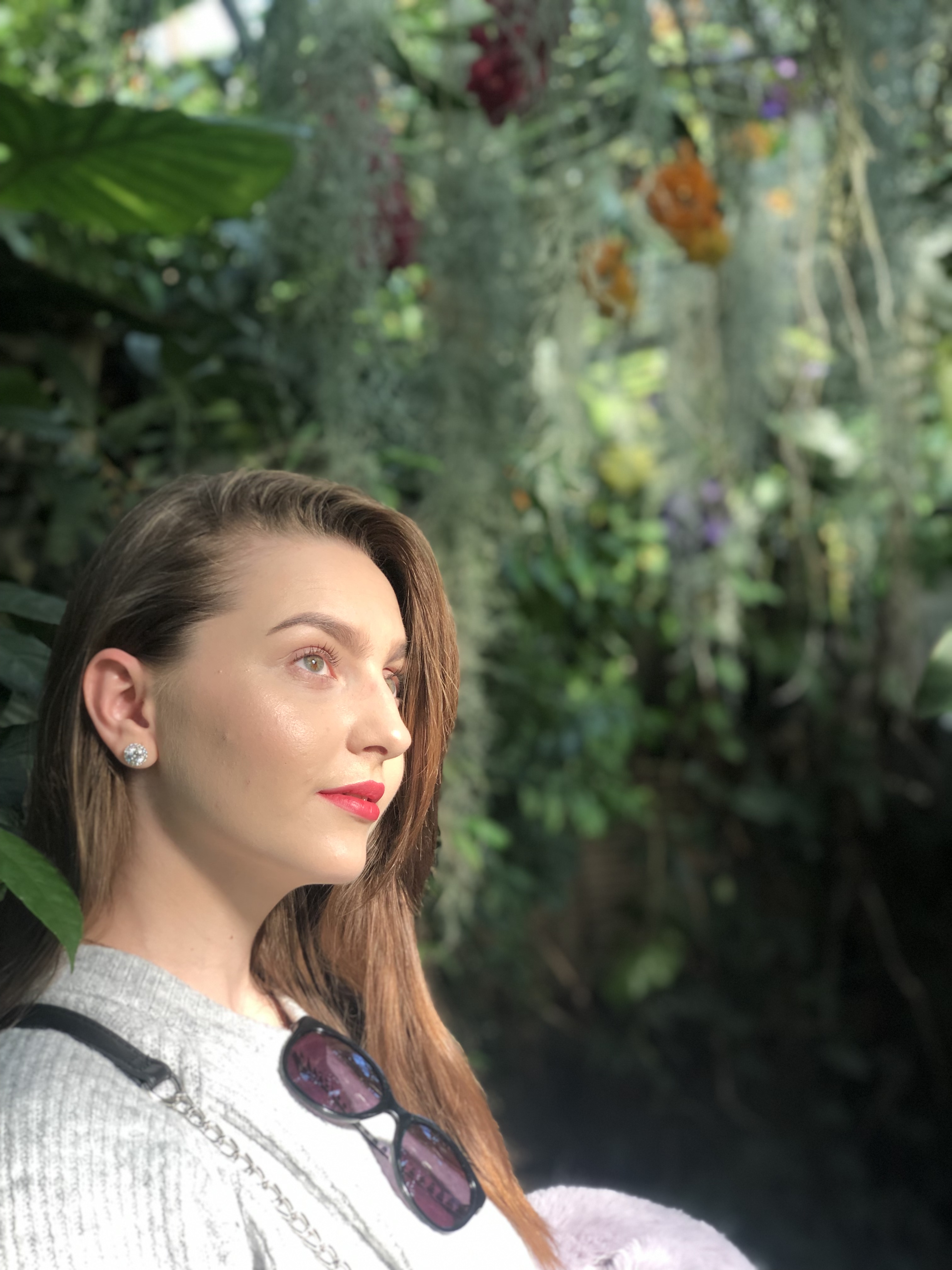
Selection of photos from Kew Gardens.
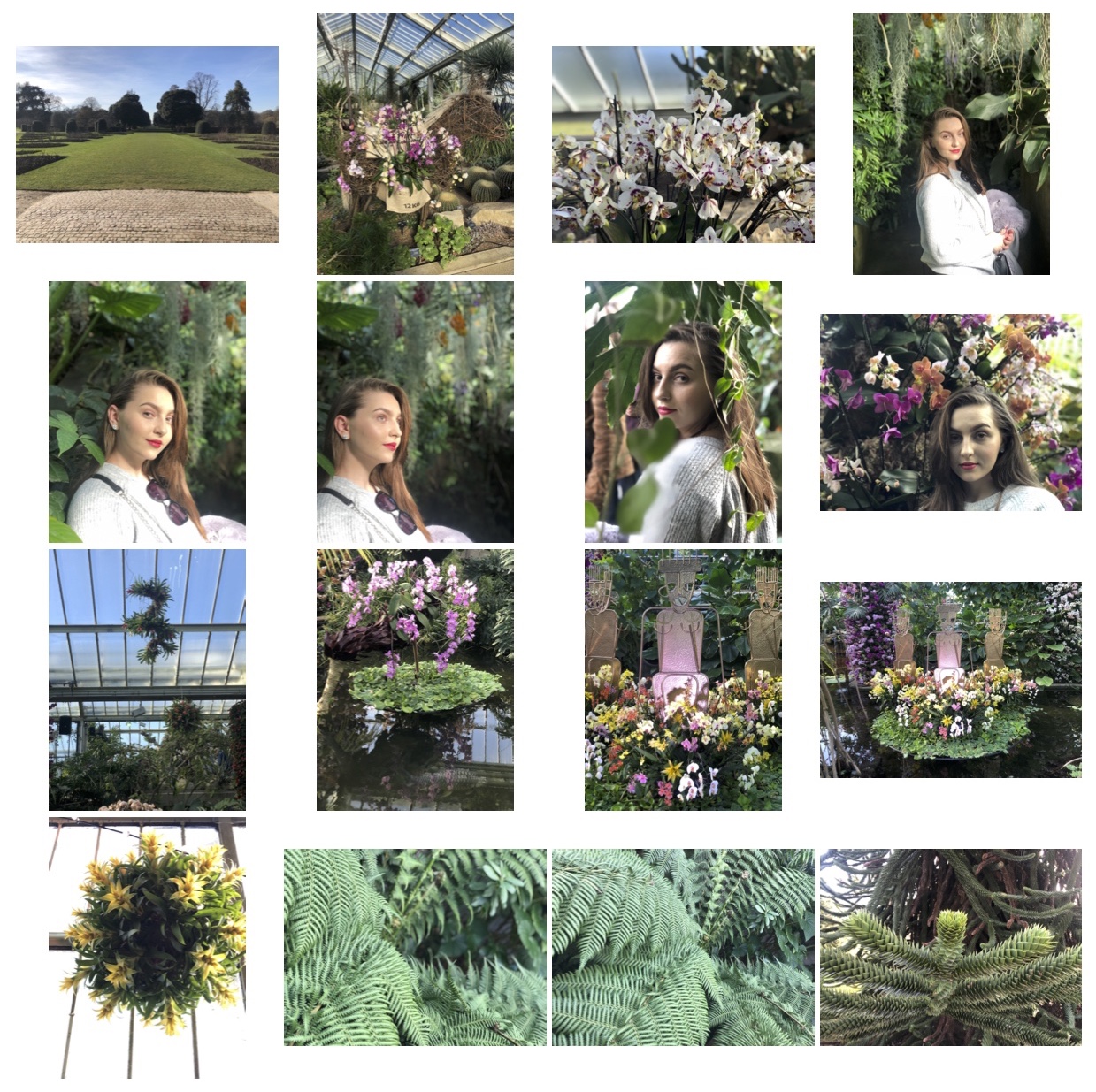
I wanted to come up with ideas that i could use to take photographs within the studio. As I had never taken photos in a studio before.
If using the same subject, so that face would be the same throughout. However, the expression, clothes, and background would change.
In a previous workshop, we had tested a technique of studio photography that I found interesting. It questions the authenticity of the emotion present within a portrait. As the photographer is able to directly influence the subject. Search for facial expression to and take the shot. This technique broke down the barrier between photographer and subject. Keeping the studio in darkness and have music playing. Asking the subject to sit and listen. The photographer without warning at any time takes photos unaware of the facial expression being made by the subject. Therefore giving a more genuine portrait of emotion.
But I would question, the subject is still aware of (even though they may not see them) a photographer is in front of them, and still, the expression may not be 100% genuine. It is possible that street photography is popular, and it is possible to take photographs without people know going about their everyday lives. Giving a more genuine expression.
how does the surrounding, items and clothes change the meaning of a portrait? to read character. I want to play around with this concept and see the outcome of these photos.
Elements of a Portrait
-
Face - The Personal appearance, facial Expression, all aspects of the face.
-
Pose - The manner and attitude, expression made,
-
Clothing - Cultural values, fashion taste, gender identity, social class.
-
Location - Background setting or lack of a background, social scene.
-
Props - Object or other things that indicate the status or dignity of the subject.
-
Portraiture was central to the historical development of photography as a commercial industry.
-
Portraits are used to identify and make visible different sections of the population. (seeing the unseen/ voyeurism? )
-
We learn to identify sign and symbols (semiotic) features when looking at portrait.
-
"Recognition" "Empathy" a vital component in the pleasure of looking at portraits. Viewers can implant their own feeling in a portrait and meaning is created only from looking at the portrait.
In this workshop, we set up in the studio further example using Flash. using Multiple flashes to achieve the best outcome. We where given gel colours to place in front of the flash to change the colour of the light. Using the coloured background and colours flash to achieve aesthetically pleasing effects.
In this photo we website the natural colour of the flash with a pale blue background. Using a light meter to get the flash intensity at the correct strength. Again Setting the camera shutter speed at 1/125 and iso 100 and RAW format. Keeping eye on the aperture because of the KIt lense with the camera it would change when you zoom with the lens.
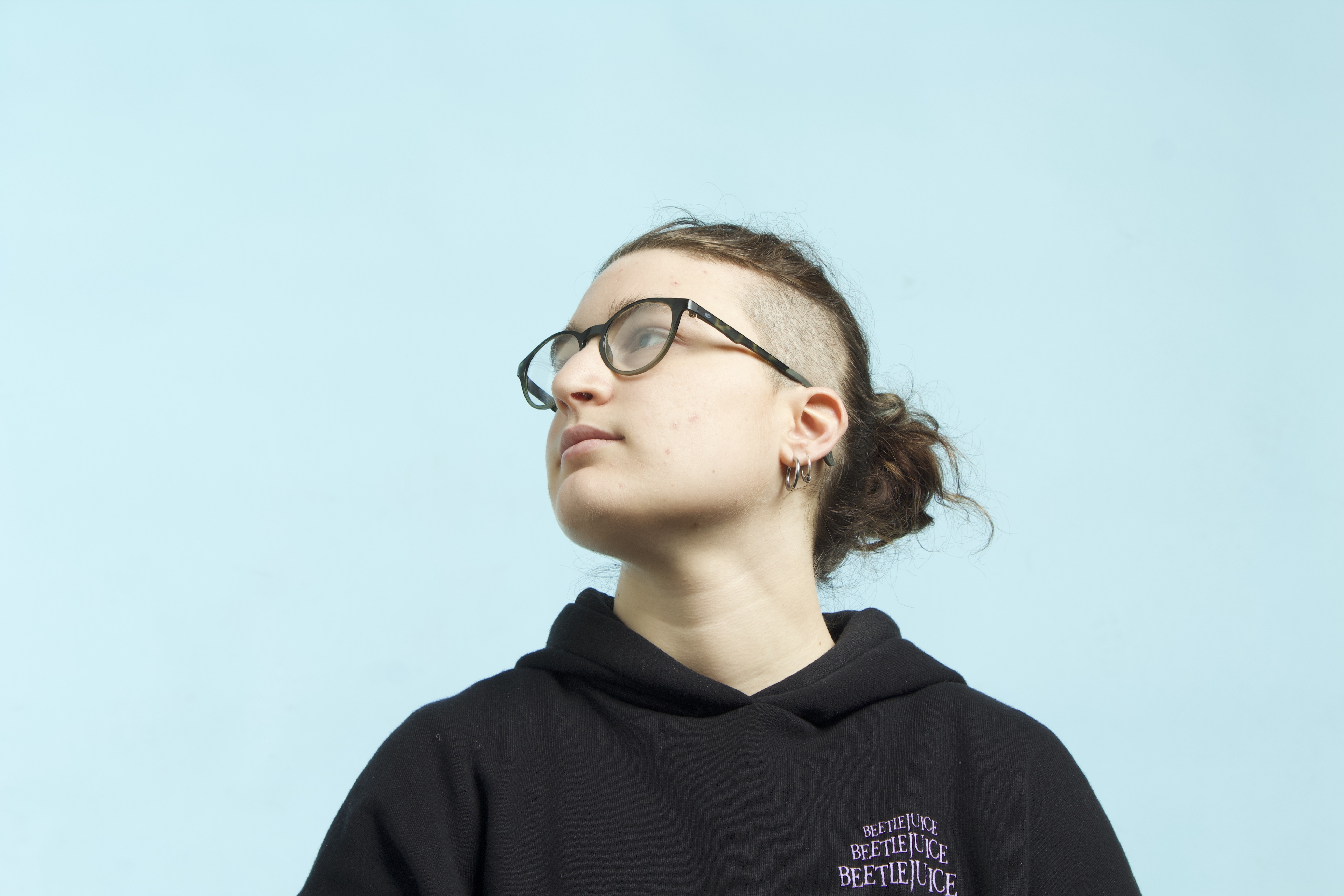
The second photo we added a purple gel to one of the lights and decided to you a Profile picture so the colour difference can enhance the difference between the skin an hair giving it a slight pinkish hue against the hair.
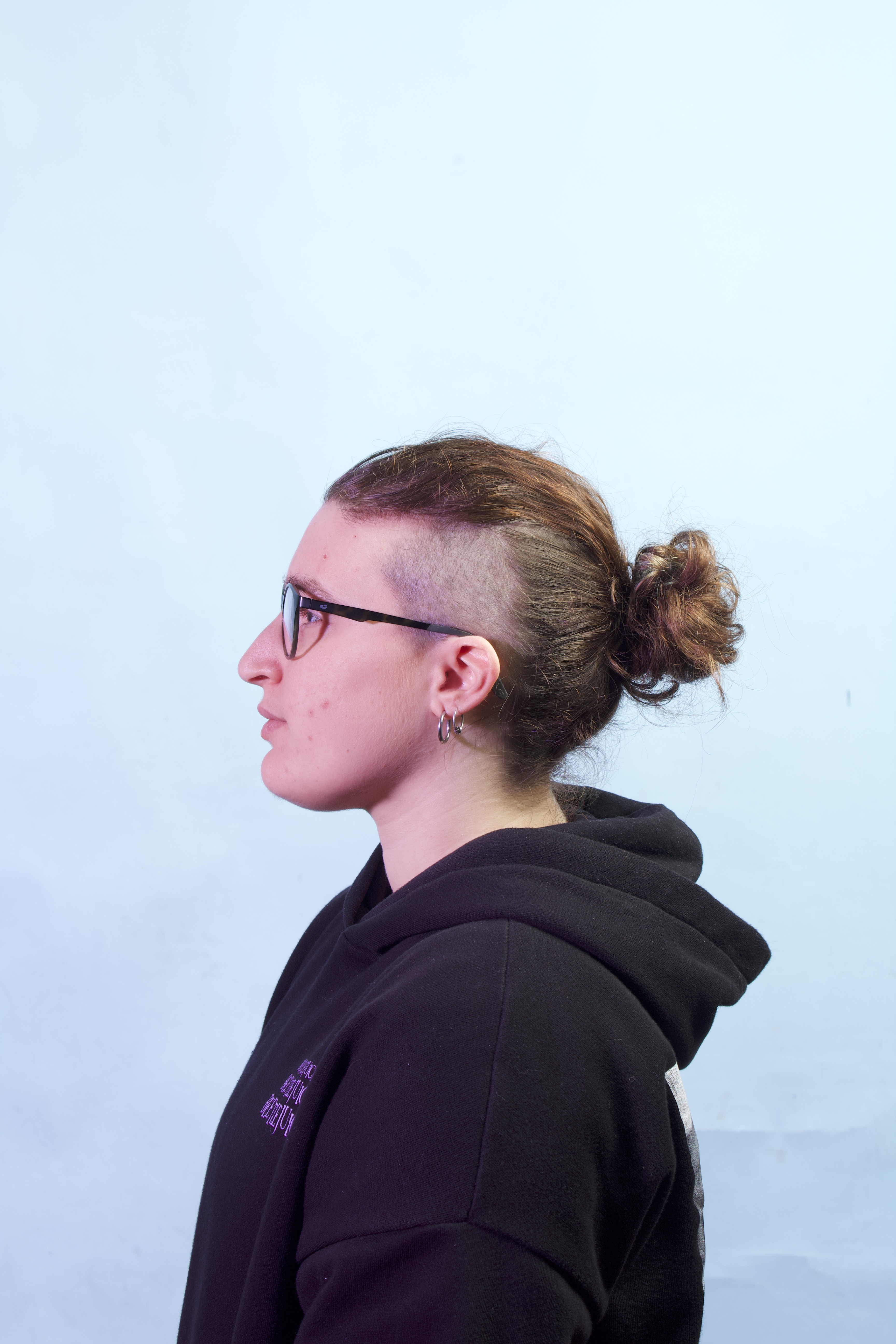
Using Multiple gel colours that we had available to us as well as a baby blue background we were able to achieve the results. How some of the colours mix and wash out towards the background. It is all about where to place the coloured gels and intensity. A variety of different looks and colours can be achieved.
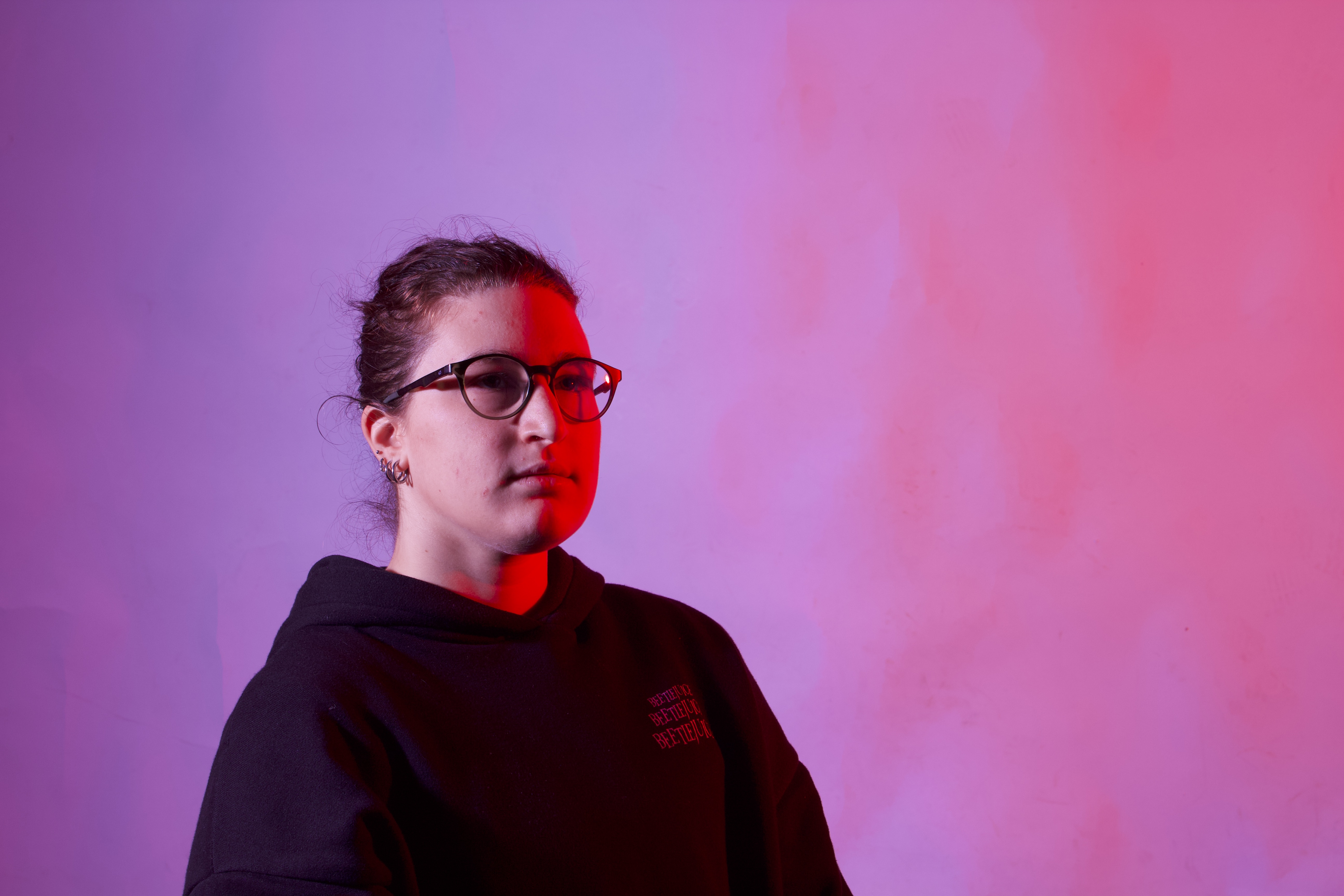
In the last shot, we stopped using gel and add an attachment to one of the flashlights that would focus spread of the light. Giving a spotlight effect that can be seen against the background. As well as a softbox flight light to focus on the face not be in too much darkness.
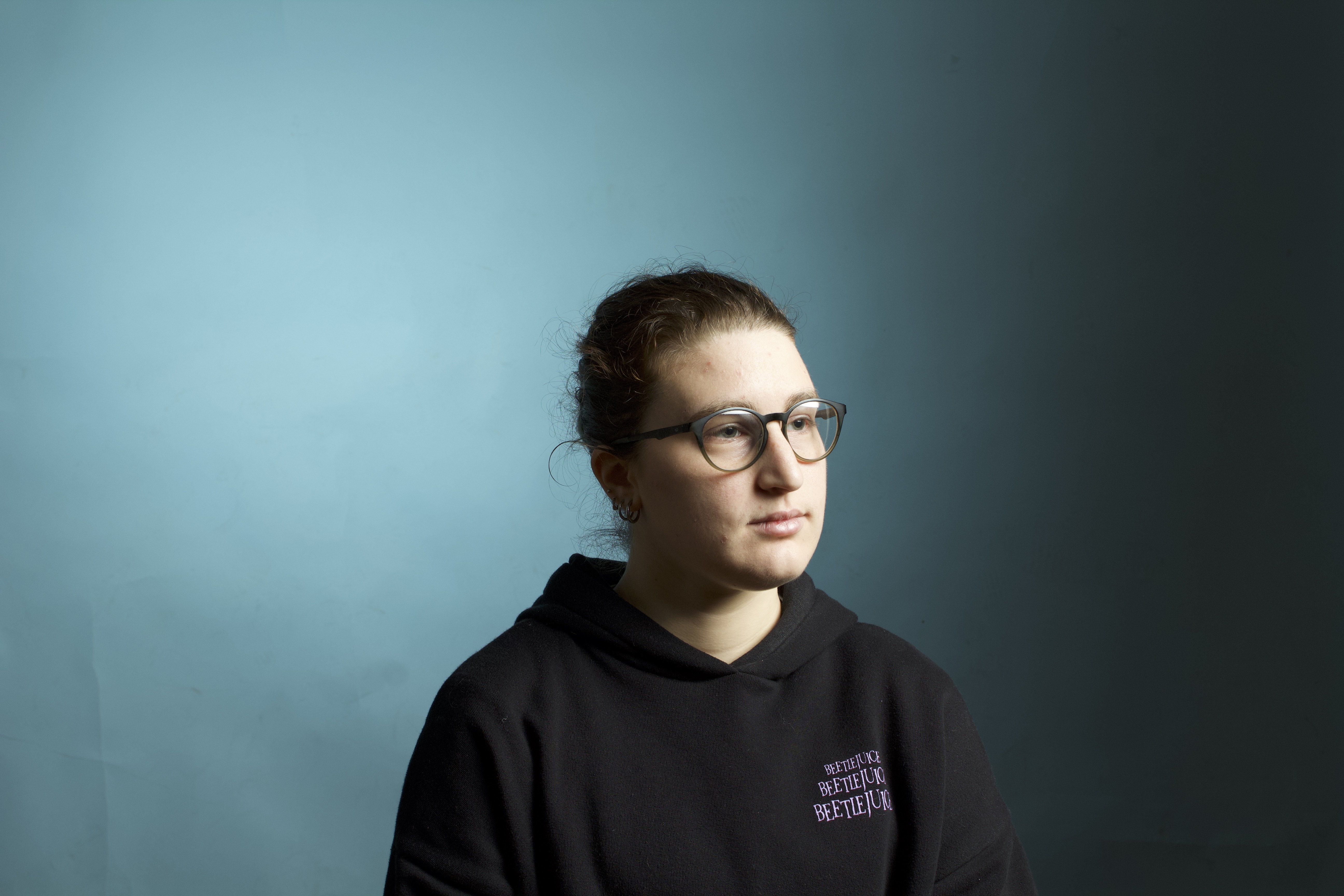
Selection of photos from the workshop with me behind the camera.
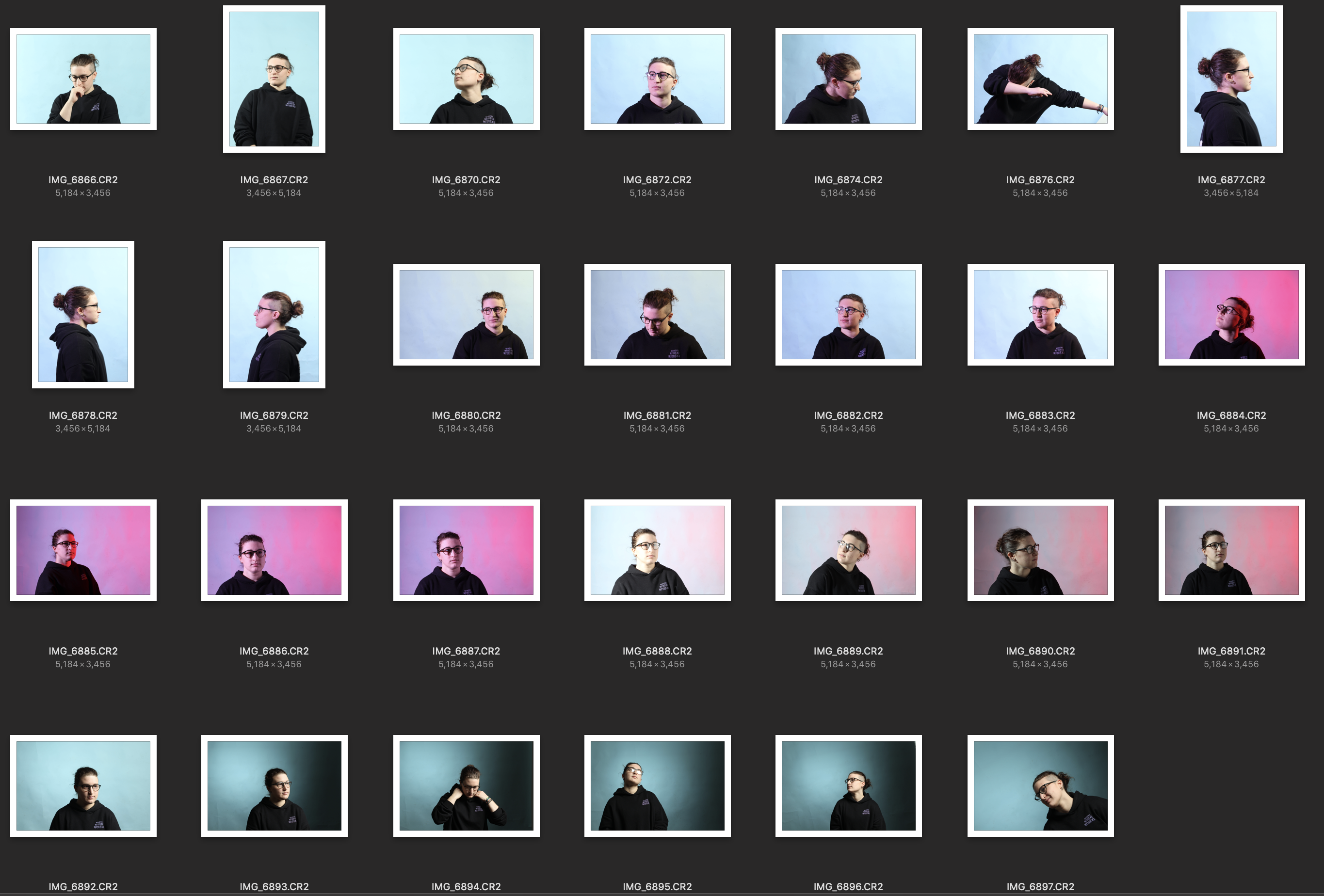
What stood out to me the must while visit this gallery was a work by Ian Klaer: Endnot, ping (seam).
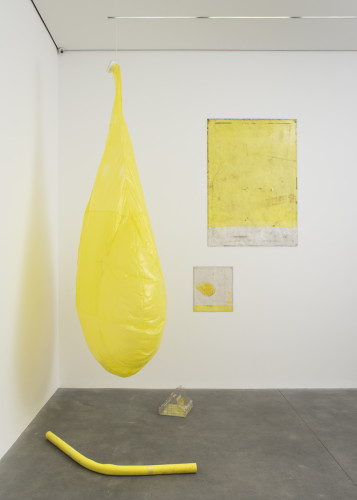
I enjoyed the aspect of an installation being multiple different pieces that are somehow linked together. For me, I like to try to find the link between the pieces what was the choice, of course, each person has their own opinion regarding what they see. Art can be very personal.
Looking at the photos below. Starting at the scale model of a greenhouse:
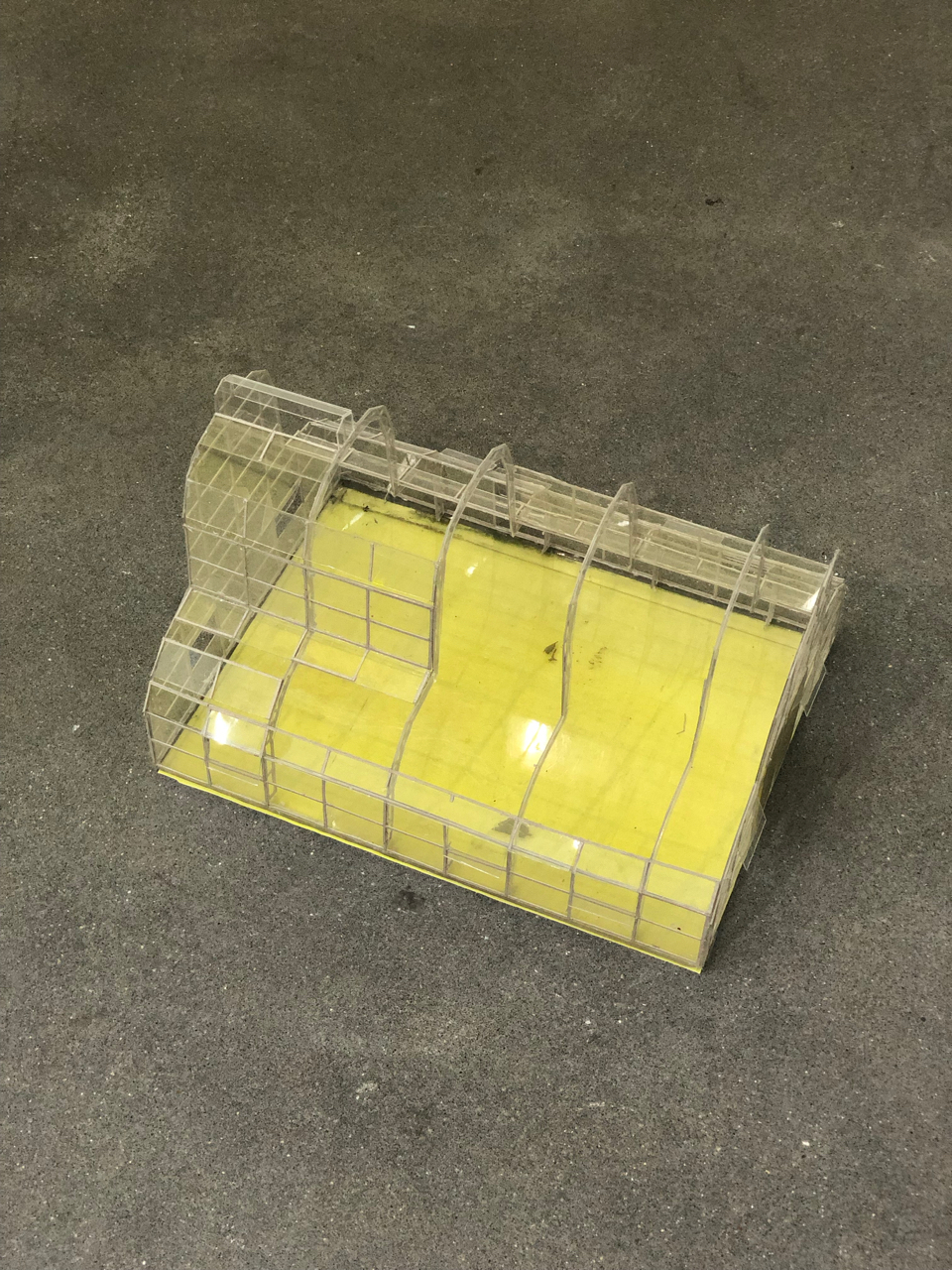 I felt this was an artistic rendition of a construction site. That each of the other large peace somehow connects with the scale model.
I felt this was an artistic rendition of a construction site. That each of the other large peace somehow connects with the scale model.
Looking closer at the plastic acrylic the yellow pane, I noticed a lot of what seemed to be pencil drawn fauna.
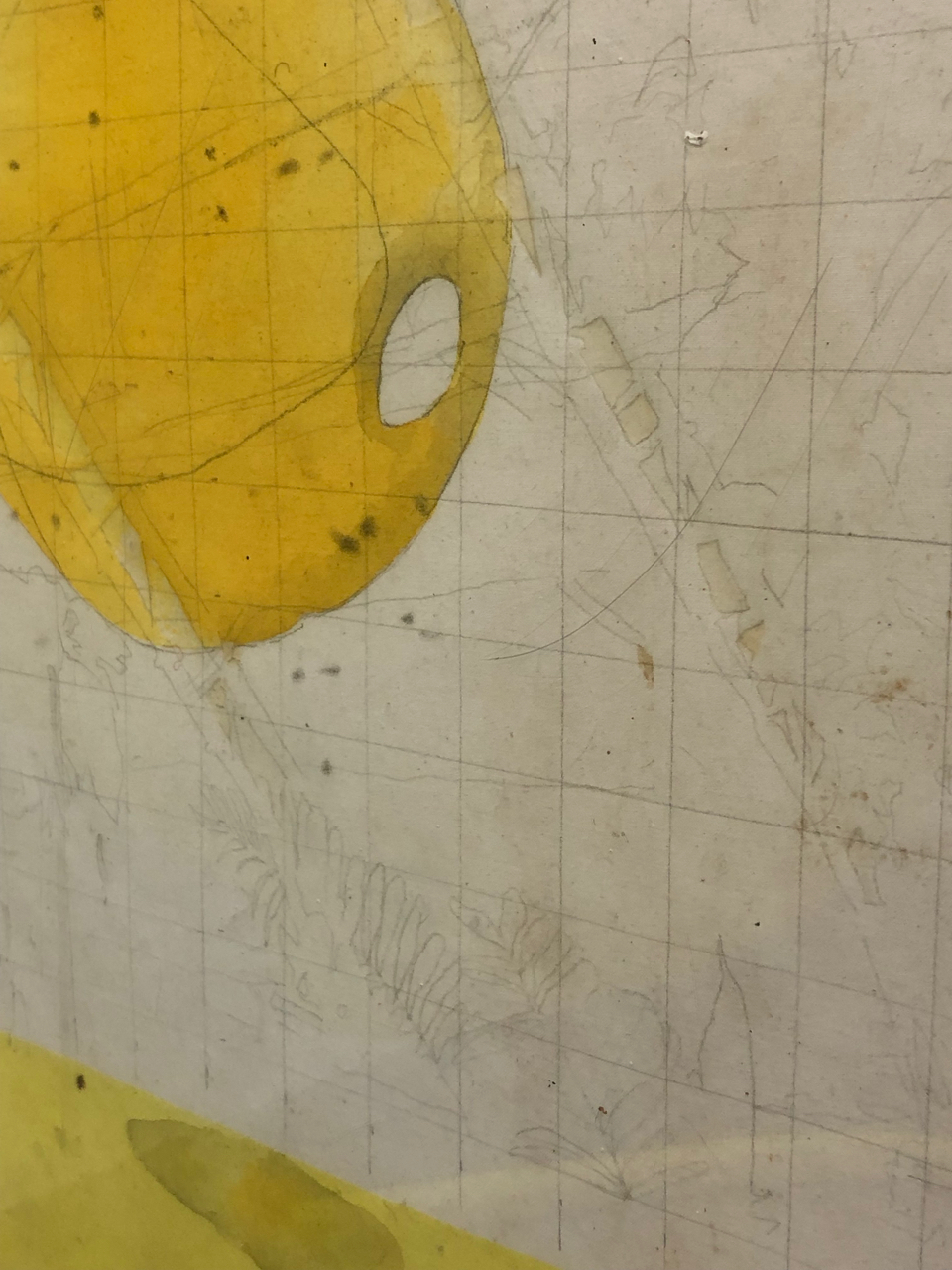
Looking at the stick peice of foam on the ground, it also reminded me of the foam placed around scaffolding so if people walk into it and get hurt. This is why for me I felt strongly about a blueprint and plane to build the scale model of the greenhouse to life size. The large pane on the wall represents the actual size of the pane, giving the ability to try to visualise how large it will be when complete. The large air balloon in the middle represents the ambience and or object that will be in the centre stage within the greenhouse
Peter Lingburgh
Known for his memorable cinematic images, Peter Lindbergh is recognised as one of the most influential contemporary photographers. Born in Lissa (Germany) in 1944, he spent his childhood in Duisburg (North Rhine-Westphalia). He worked as a window dresser for a local department store and enrolled the Berlin Academy of Fine Arts in the early 1960’s. He remembers these years: "I preferred actively seeking out van Gogh’s inspirations, my idol, rather than painting the mandatory portraits and landscapes taught in Art schools...".
Known for his memorable cinematic images, Peter Lindbergh is recognised as one of the most influential contemporary photographers. Born in Lissa (Germany) in 1944, he spent his childhood in Duisburg (North Rhine-Westphalia). He worked as a window dresser for a local department store and enrolled the Berlin Academy of Fine Arts in the early 1960’s. He remembers these years: "I preferred actively seeking out van Gogh’s inspirations, my idol, rather than painting the mandatory portraits and landscapes taught in Art schools...".
Roman Vishniac
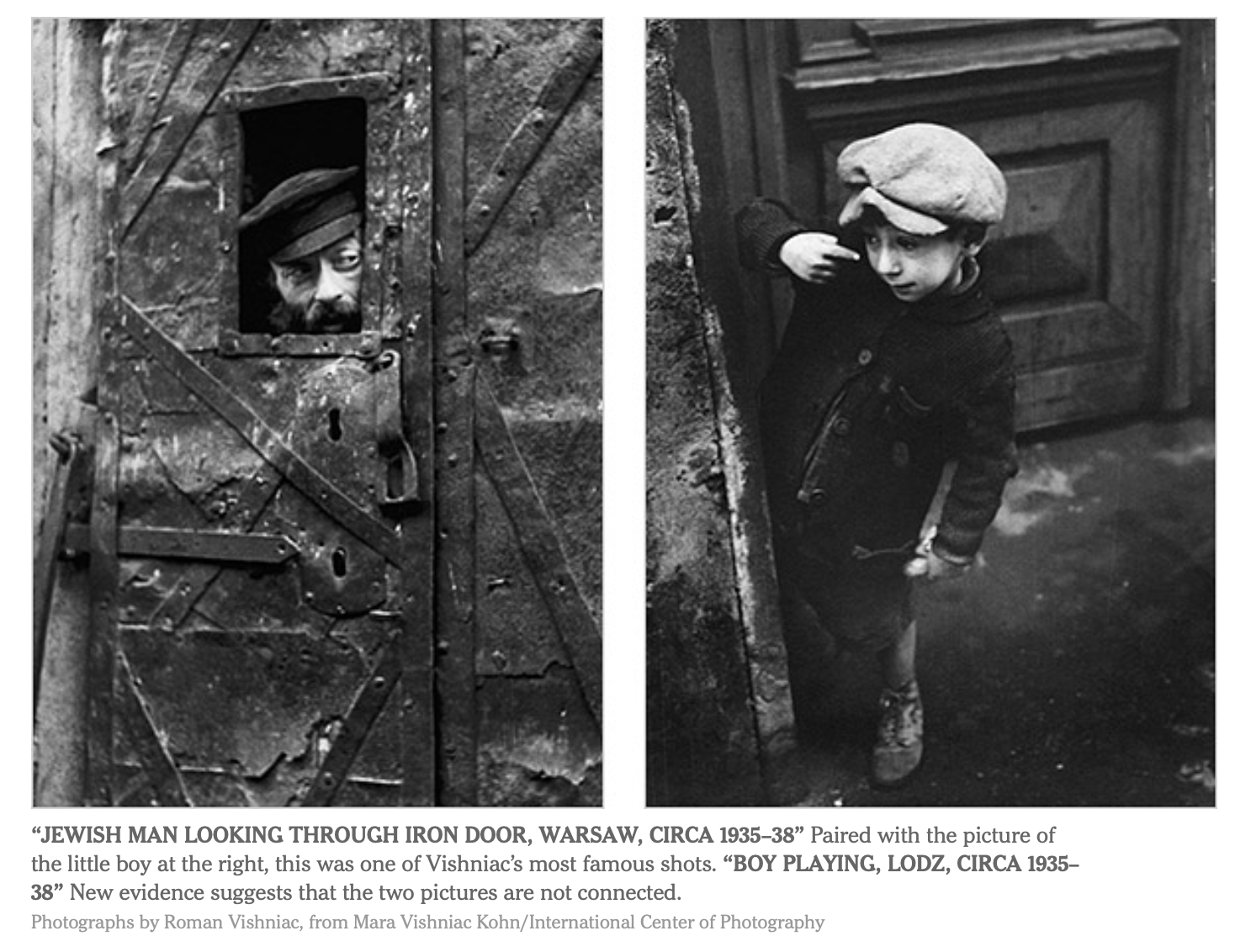
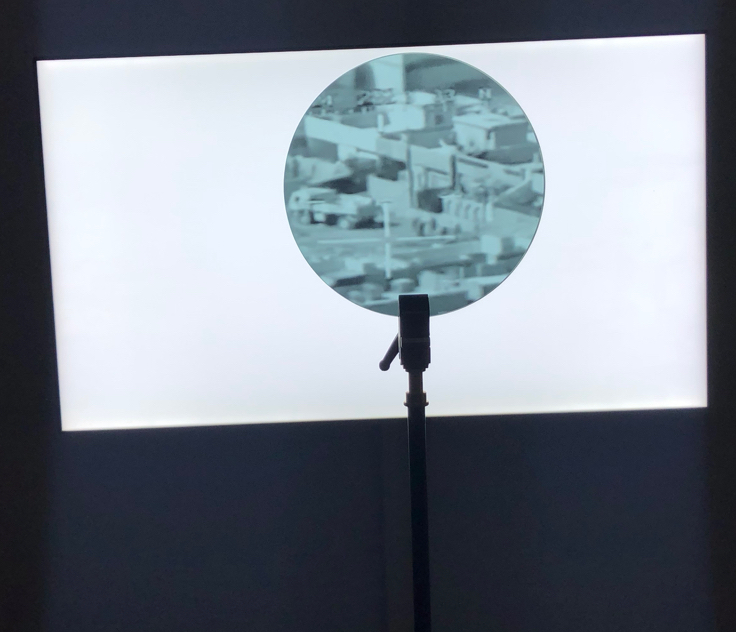
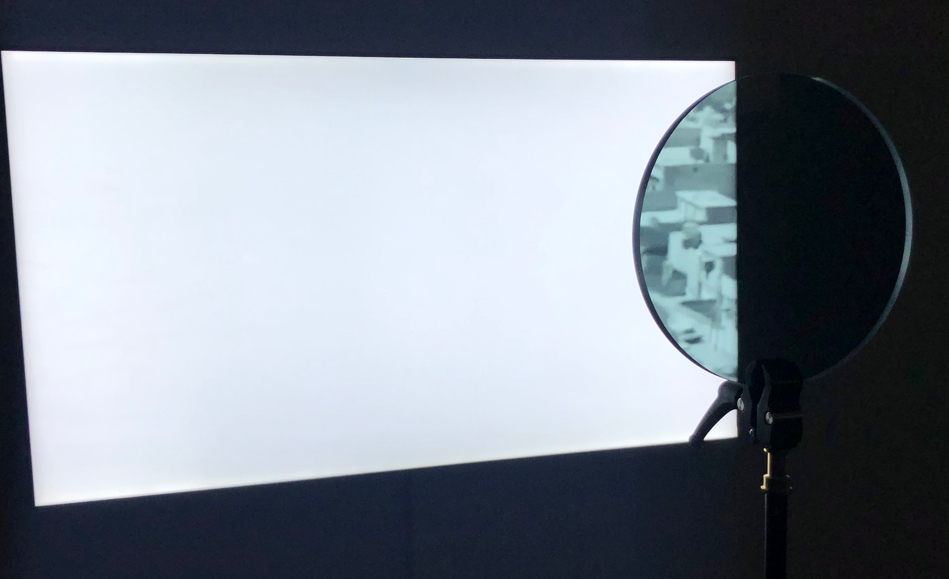
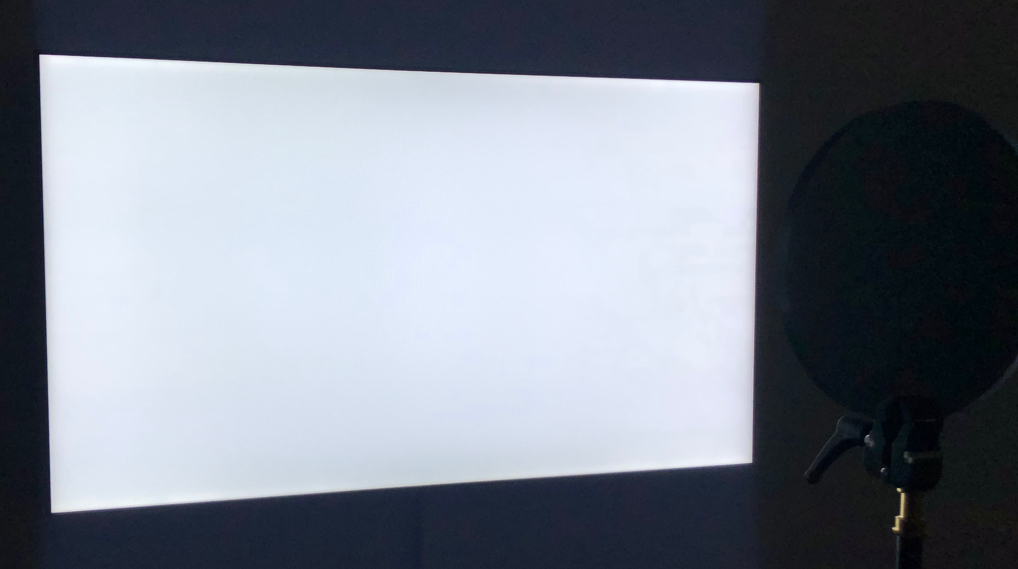
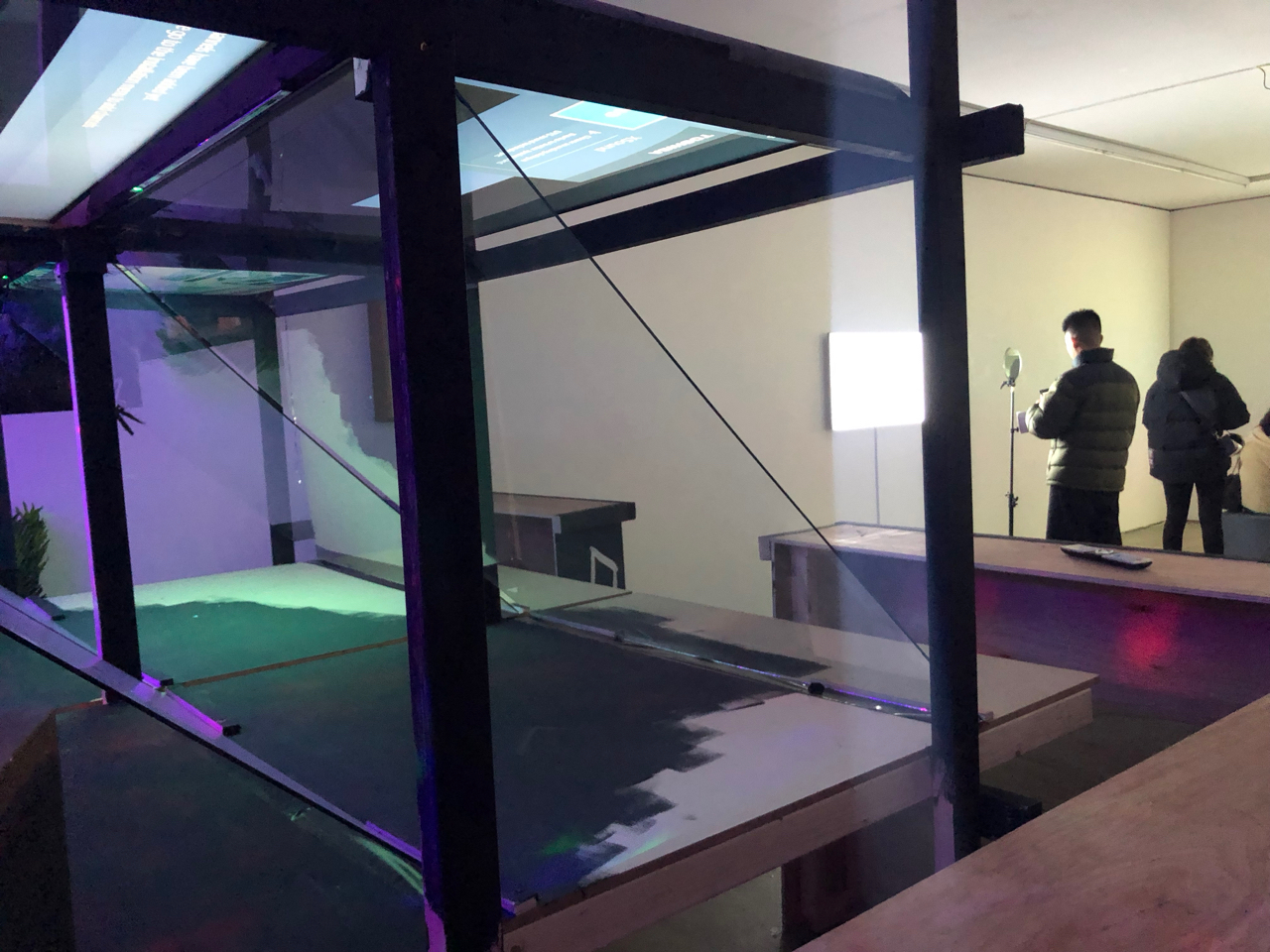
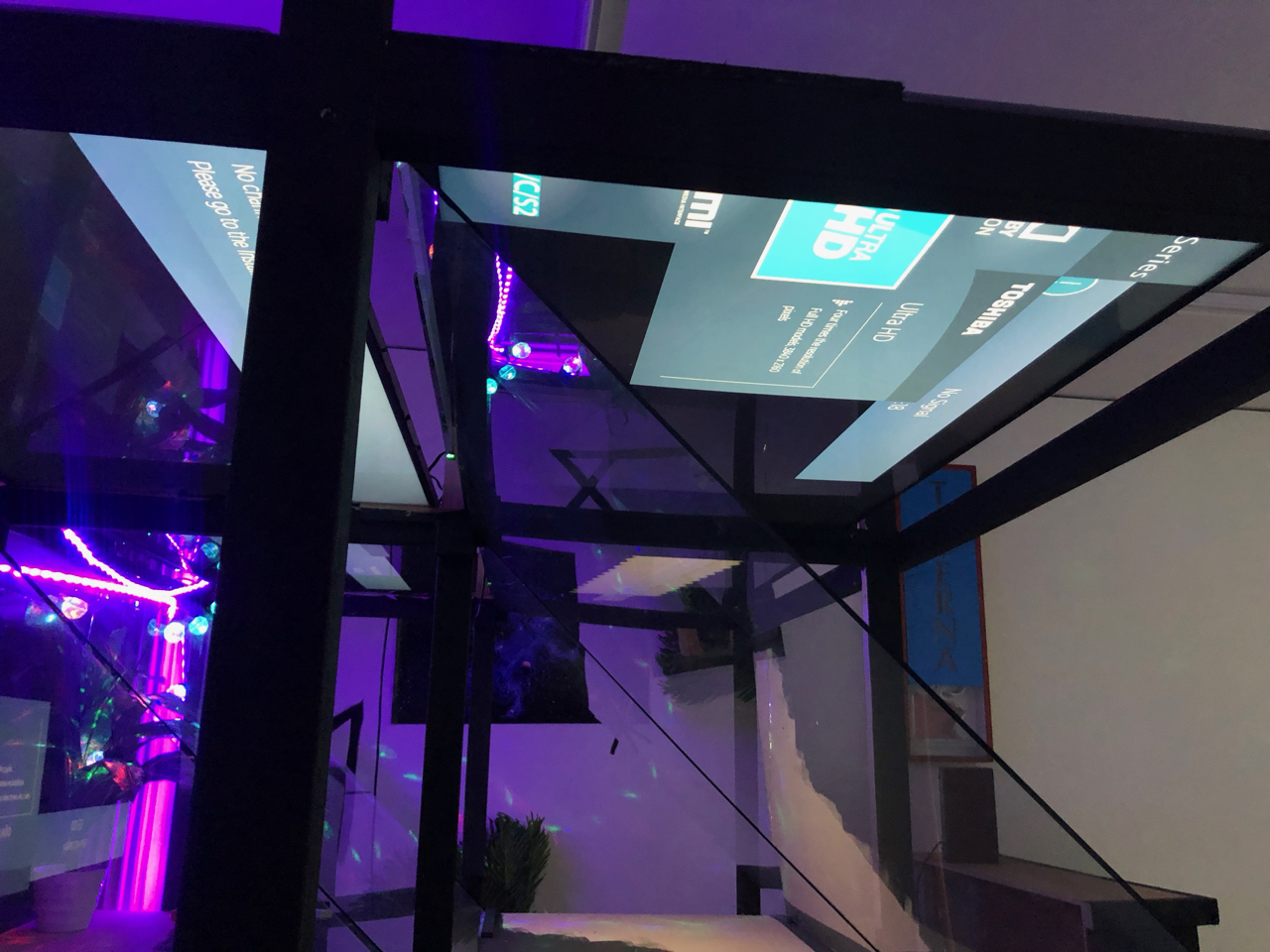
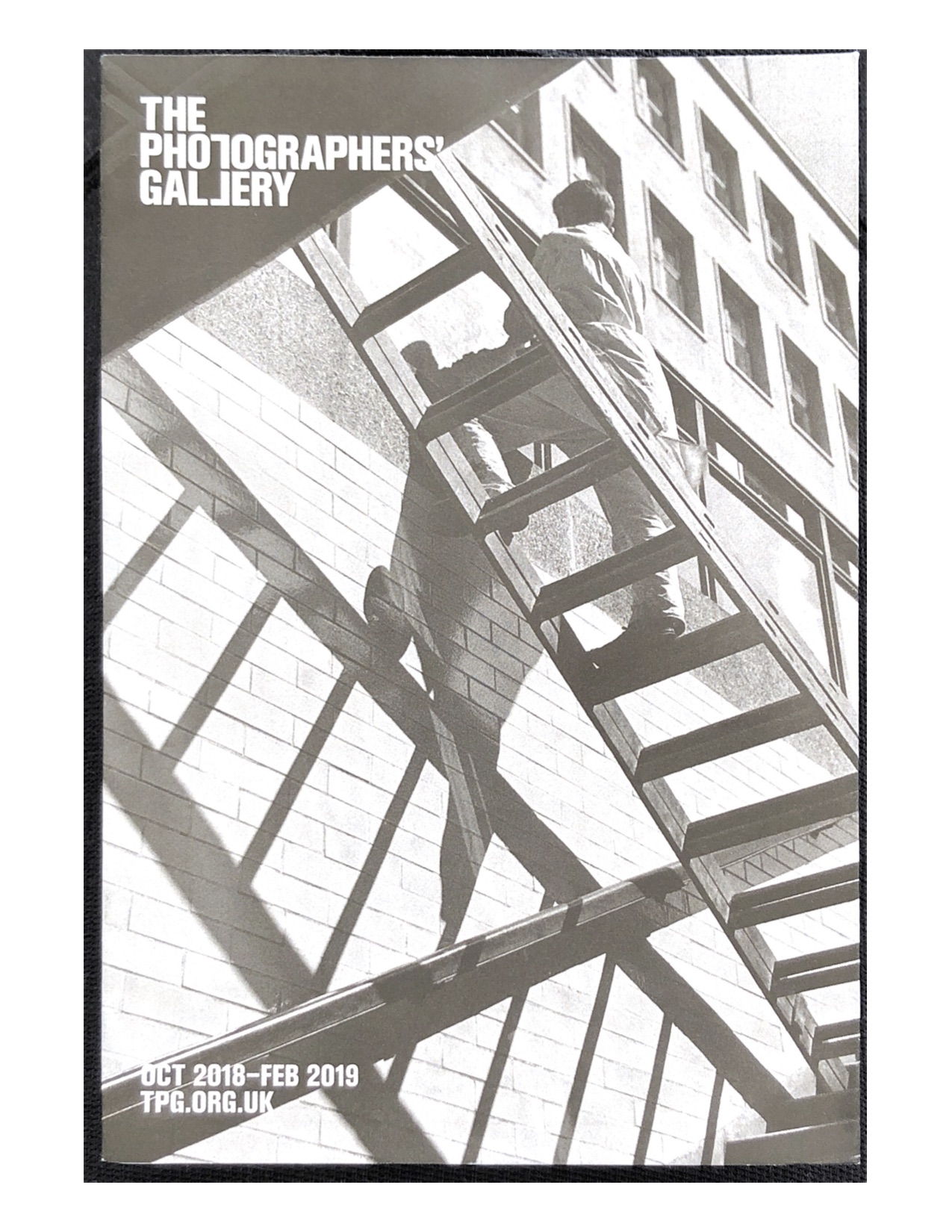
Roman Vishniac Rediscovered
He is A Russian Born American best known for reproduced photographic records of Jewish life in Eastern Europe between the two World Wards. He won international acclaim for his Jewish ghettos, celebrity portraits and microscopic biology.
between 1935-1939 he was commissioned to take picture of poor Jewish cities in Eastern Europe by the American Jewish Joint Distribution Committee. To do this he posed a salesman, bribed anyone who made it diffecult for him. Police would stop him from taking pictures and many times he was assumed to be a spy.
His in intention for the photographics were not just to perserve the history but to also raise awareness for the issues at the time.
It has been questioned regarding the authenticity of his photographers. In New York Times Magazine, an interview with Maya Burton the curator of the exhibition at the gallaery noticed the he only relaised a select view of his photographics with many cropped and inccorectly capitons.
But maybe one should not look at his work a historical reproduction of accrucy but to think about what in mainstrems society wouldbe ignored and left in the shodows.
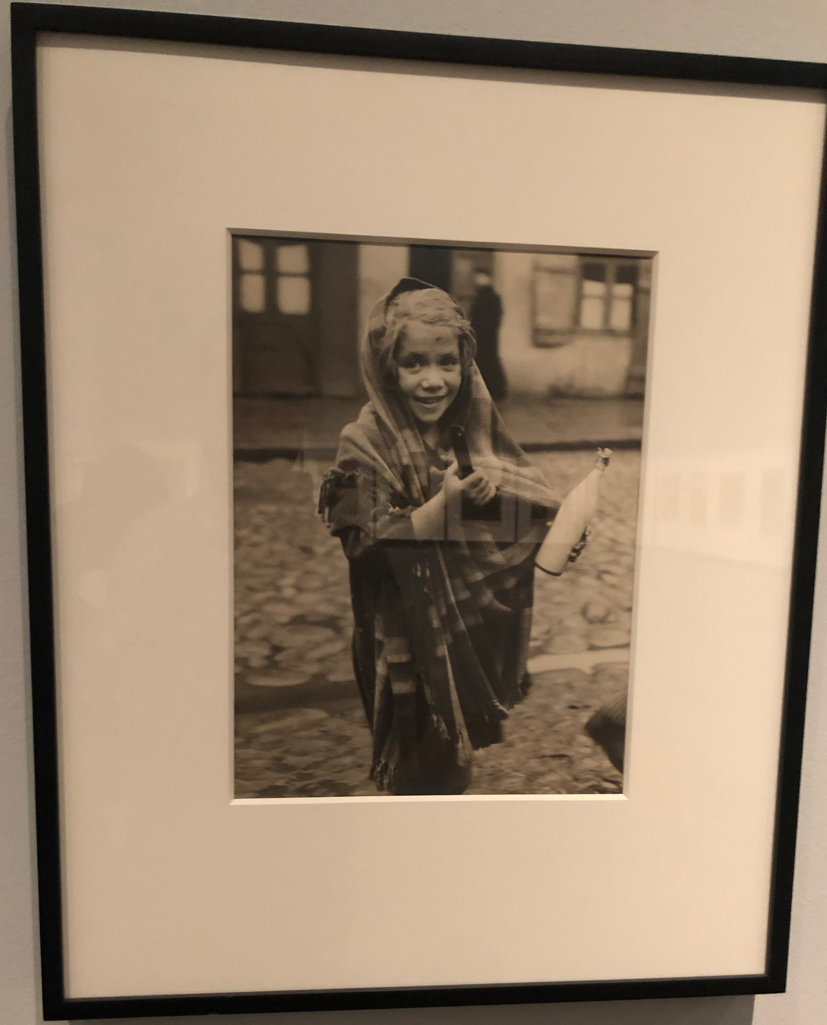
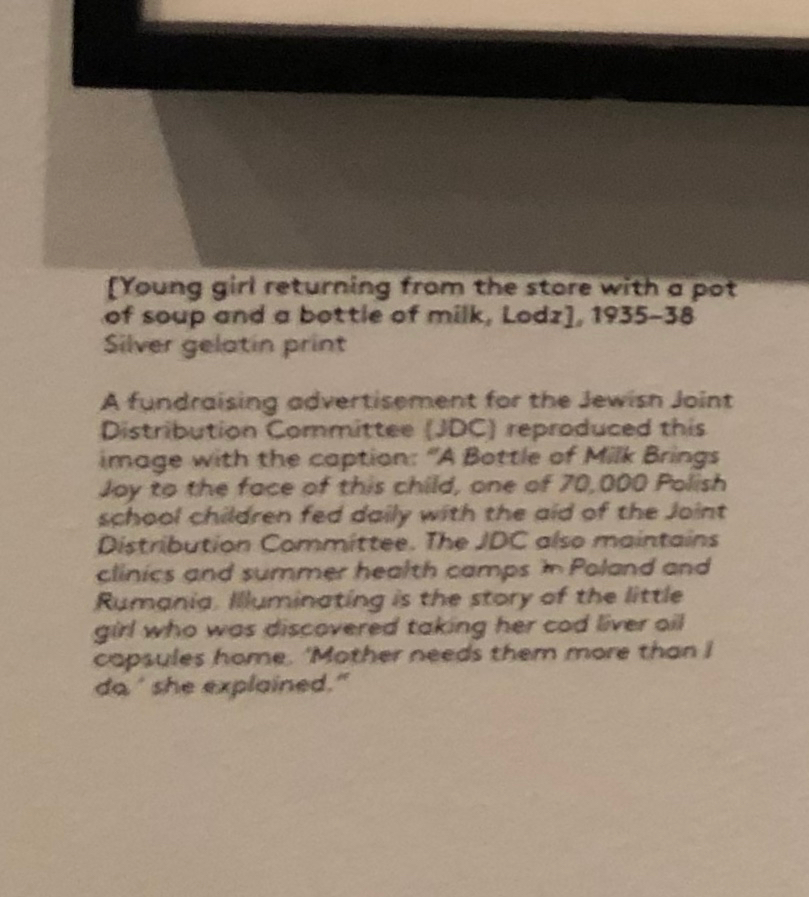
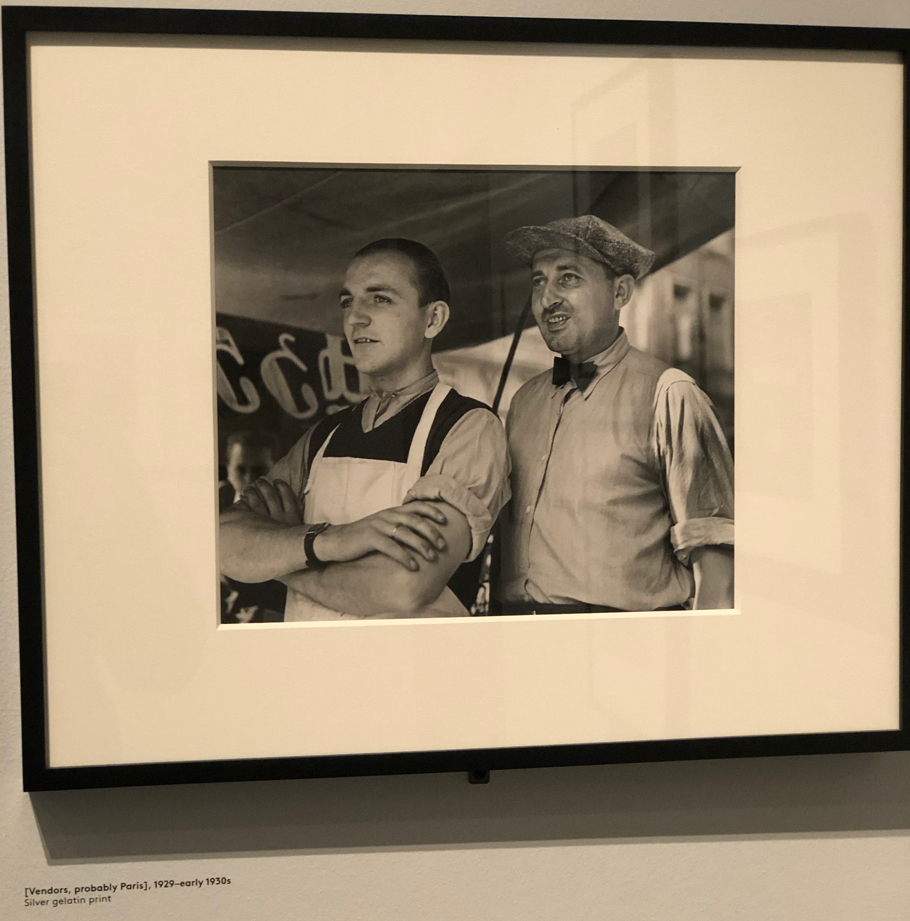
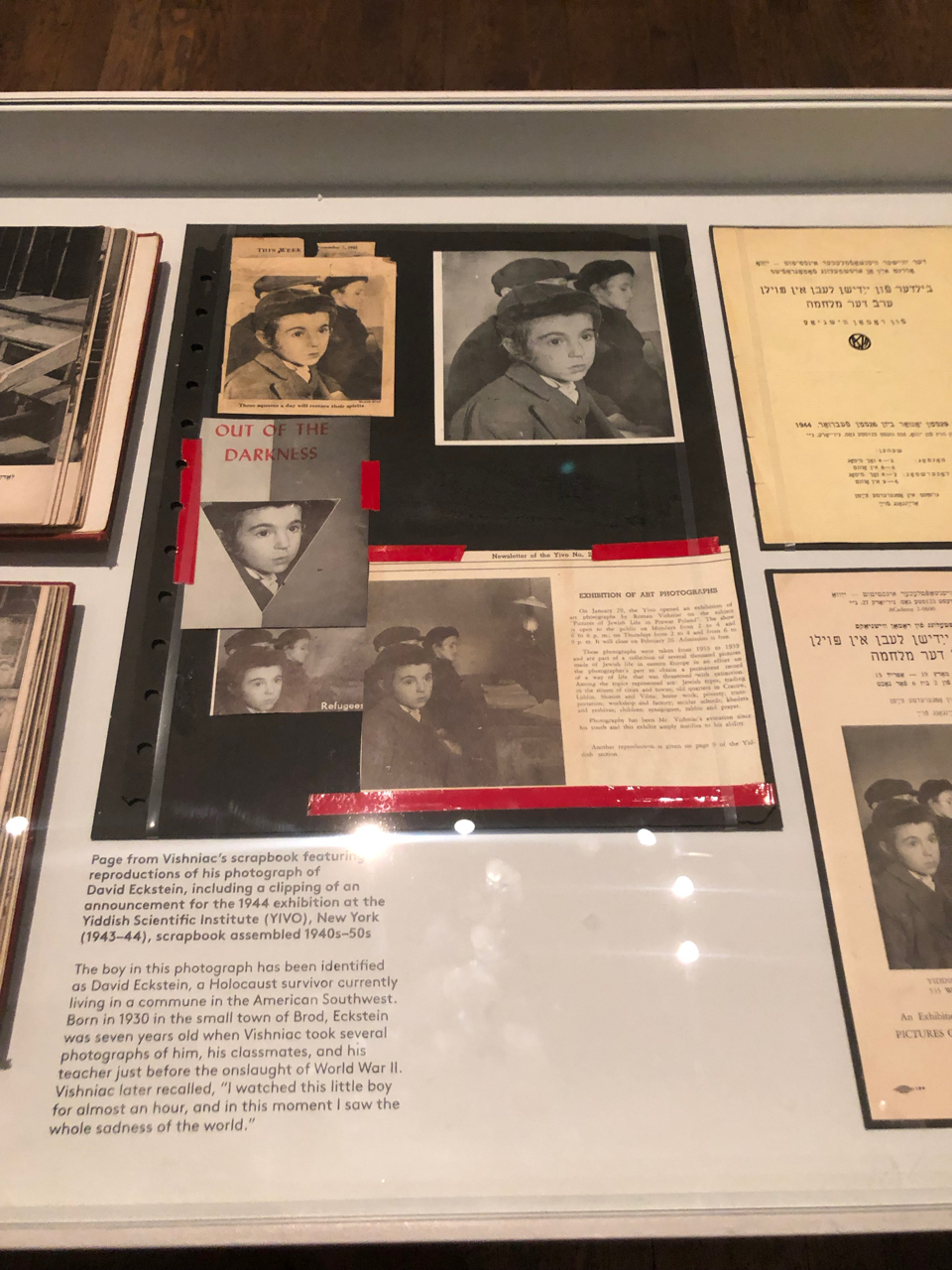
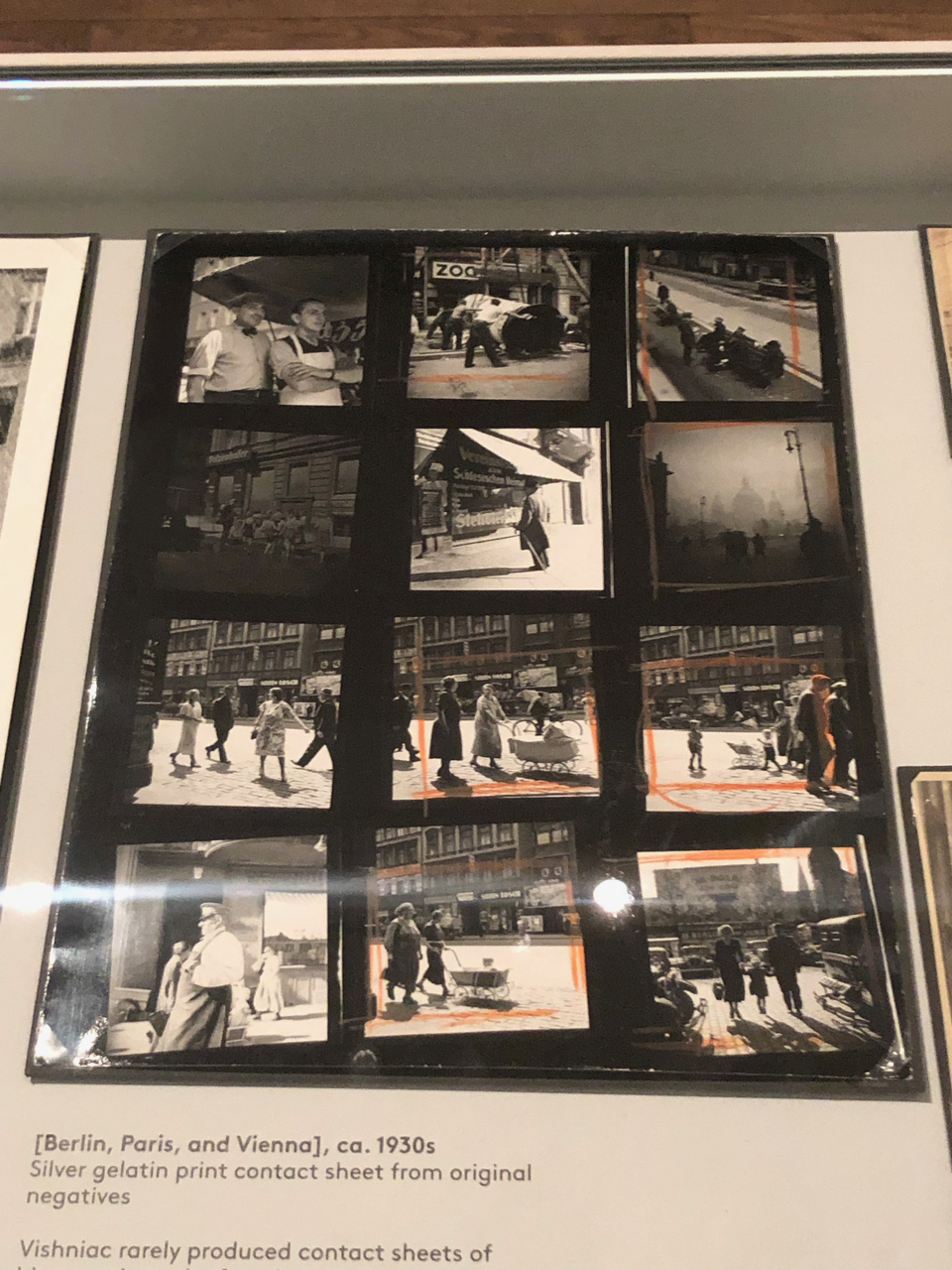
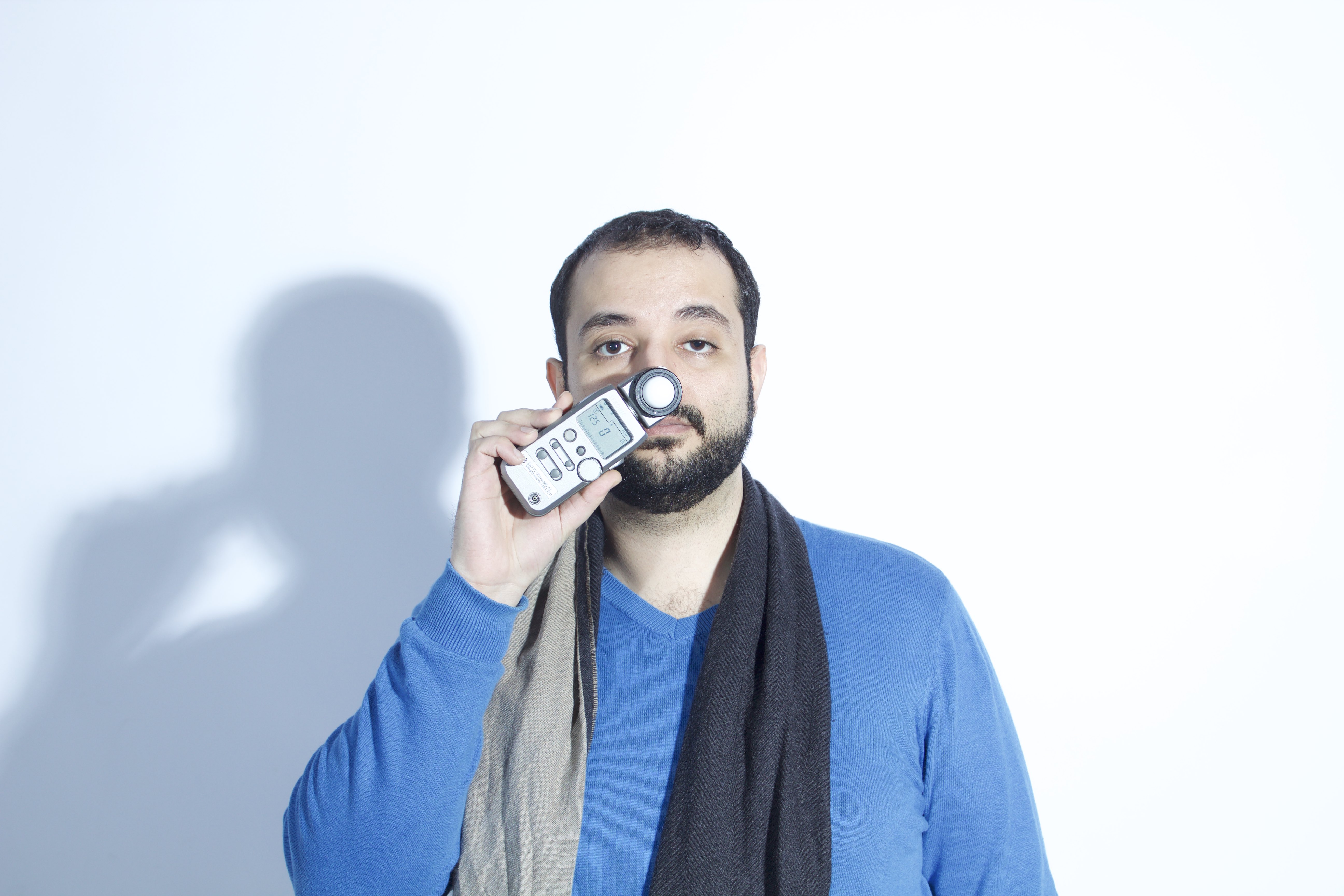
In Photgoraphy workshop We we given:
- Camera
- Flash
- Profoto Power Box
-
Light Meter
We begin learning how to use these items togther and understanding the relationship between the strength of the flash and the aperture of the camera.
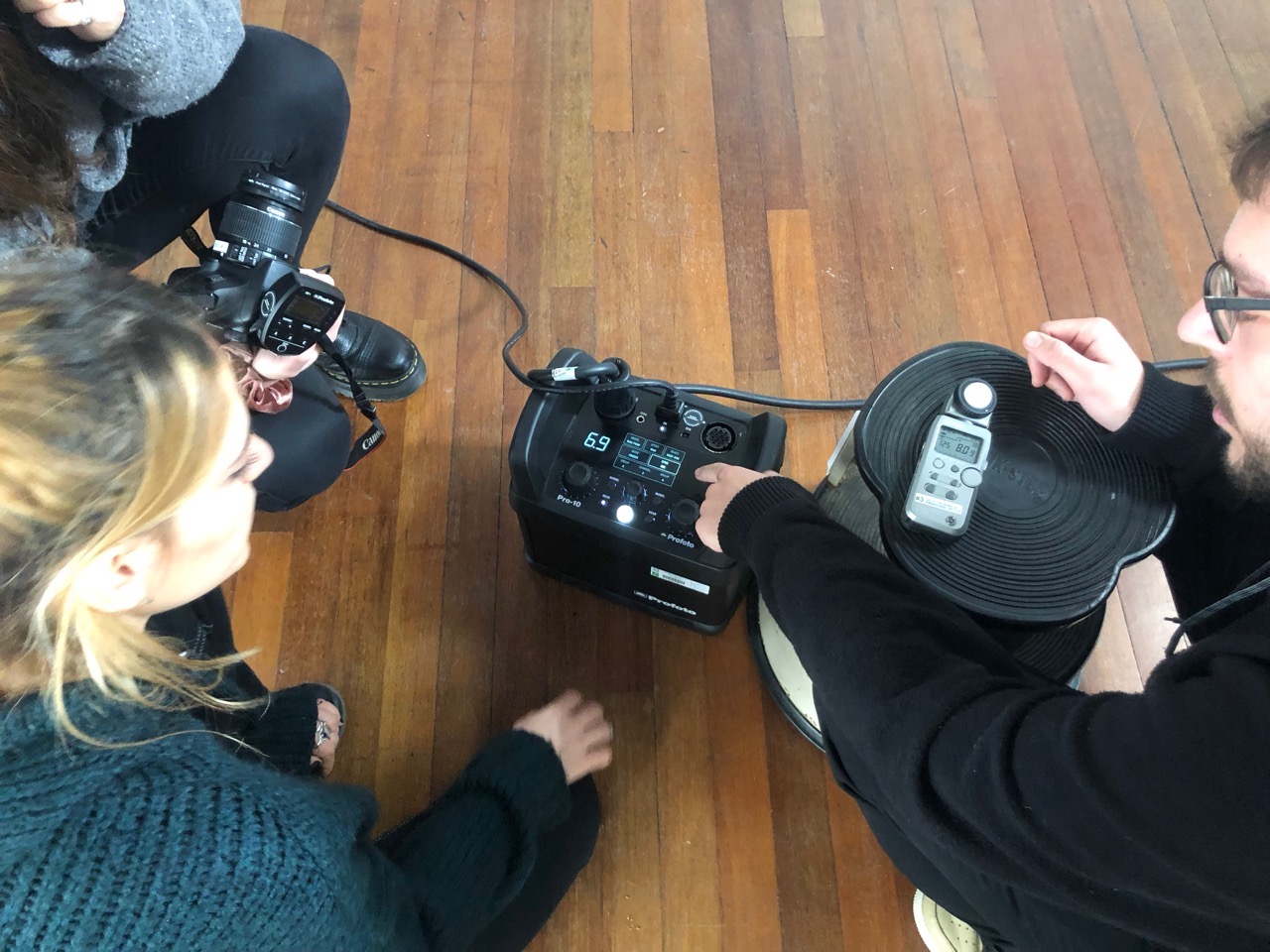
We were first tasked with taking a picture with one flash. We begen experiement with the photo of motion. From the example below they where Of dnacing and through items in the air.
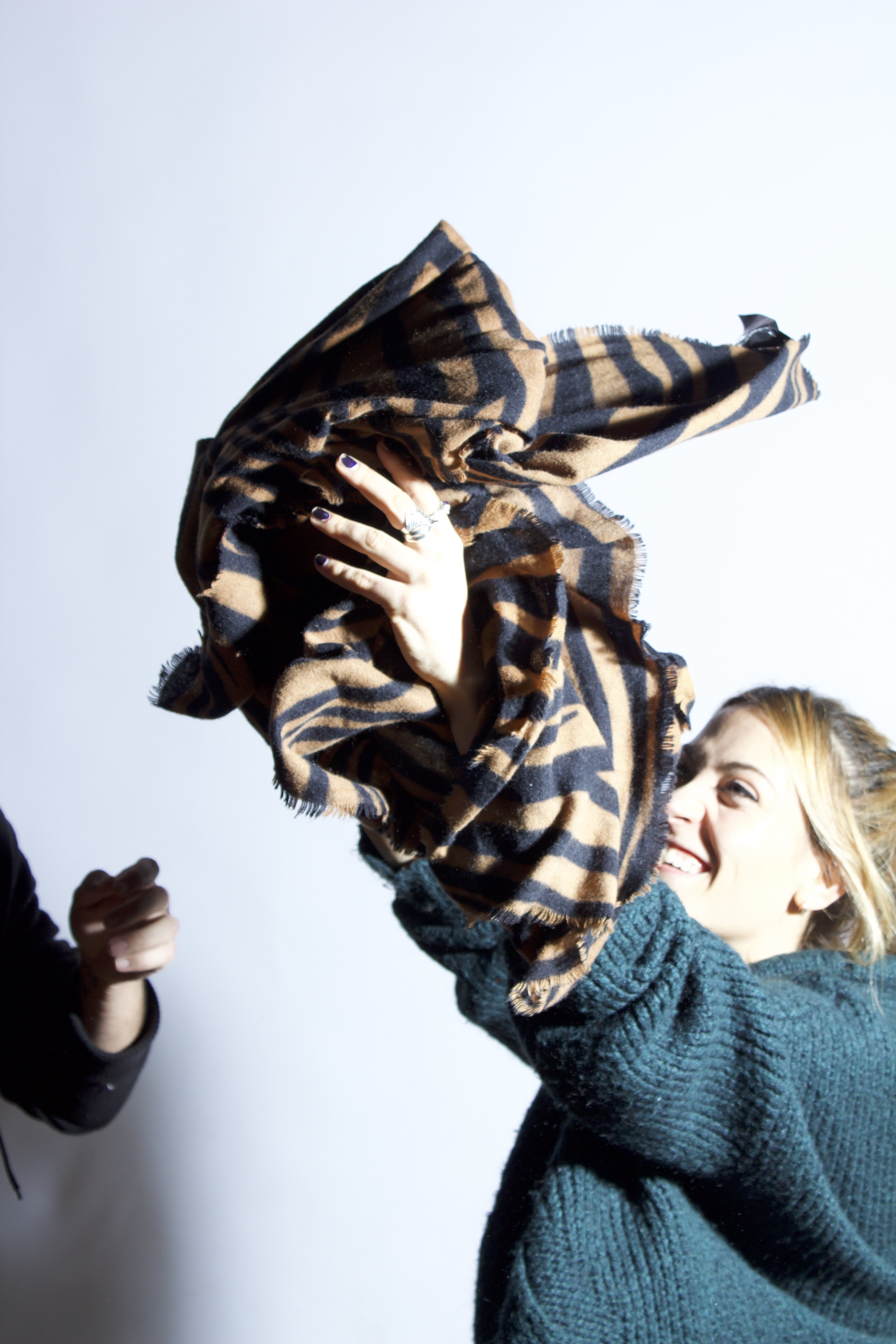
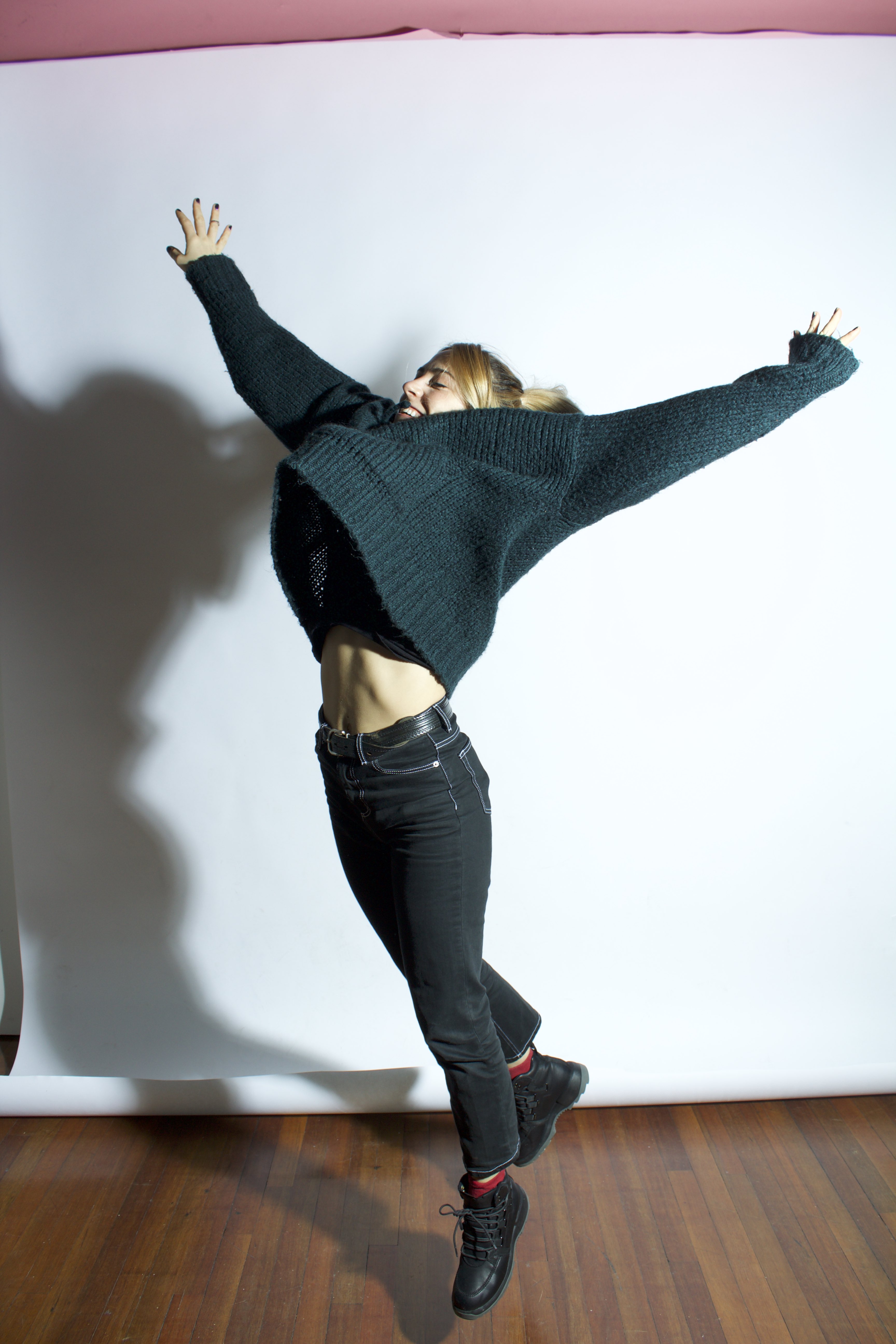
With these photos we had primarly just focus on a single subject and not thinking about the background. Out intention was to get the subject correctly exposed and the flash to be fast enough to freeze motion with in the frame.
From this we began to understand the different relationship of the setting between the light position, light strength and, camera setting.
After the break we where tasked to start using 2 more lights. With these three light we would use two light to expose the background different from the subject using the third.
We had to frist evenly place the two light the same distance away from the background. and test with the photo meter without a subject.
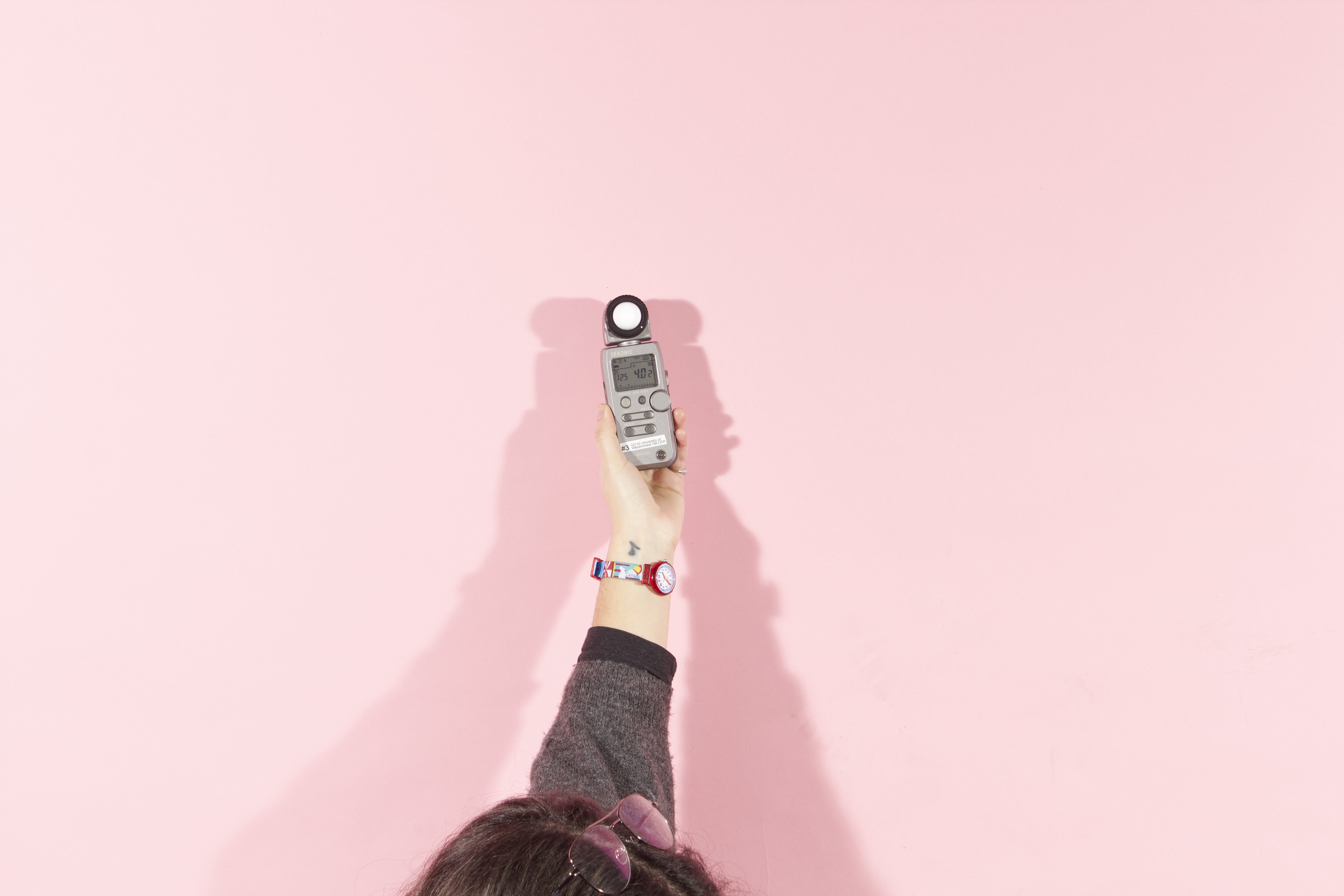
A few Photos from the studio workshop:
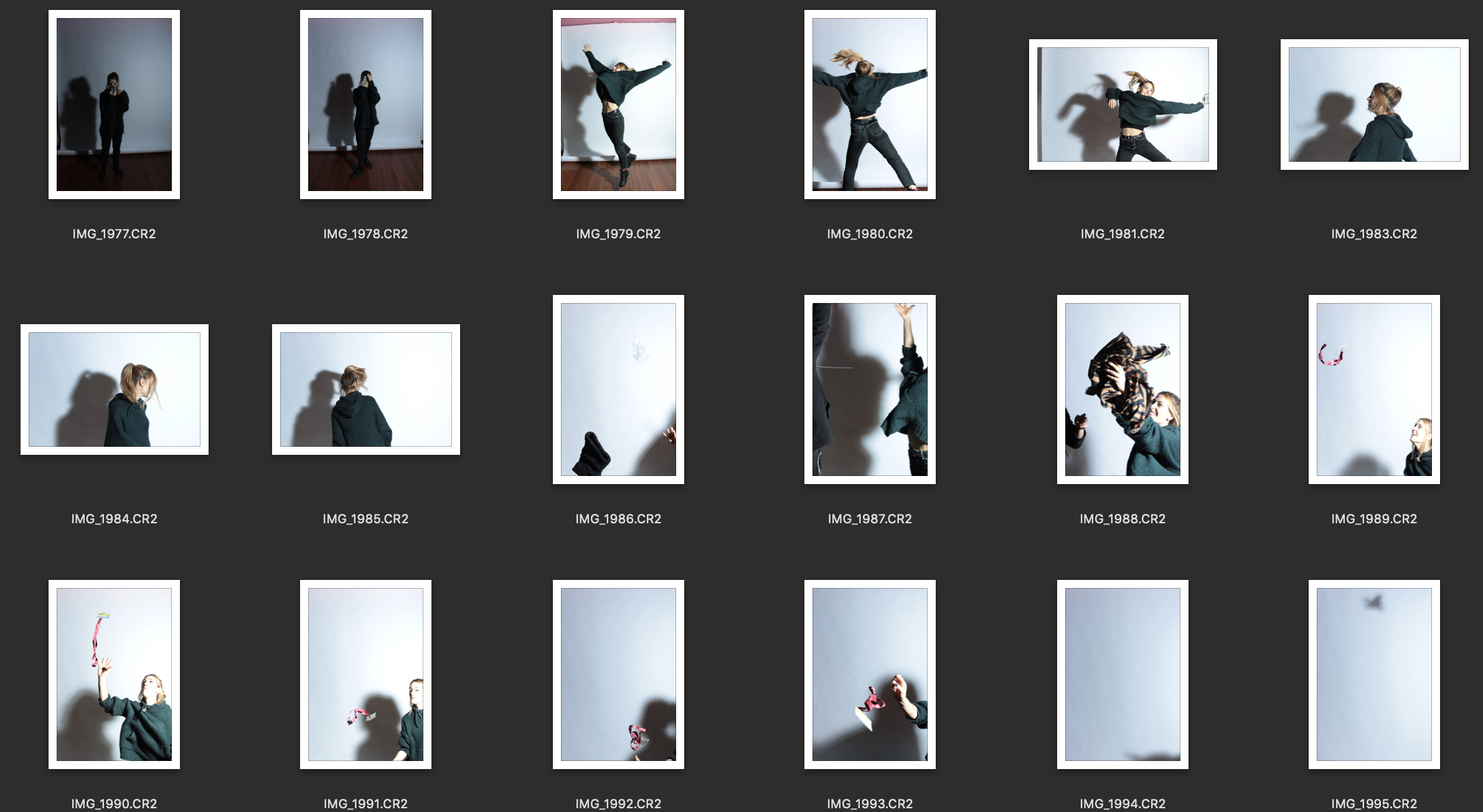
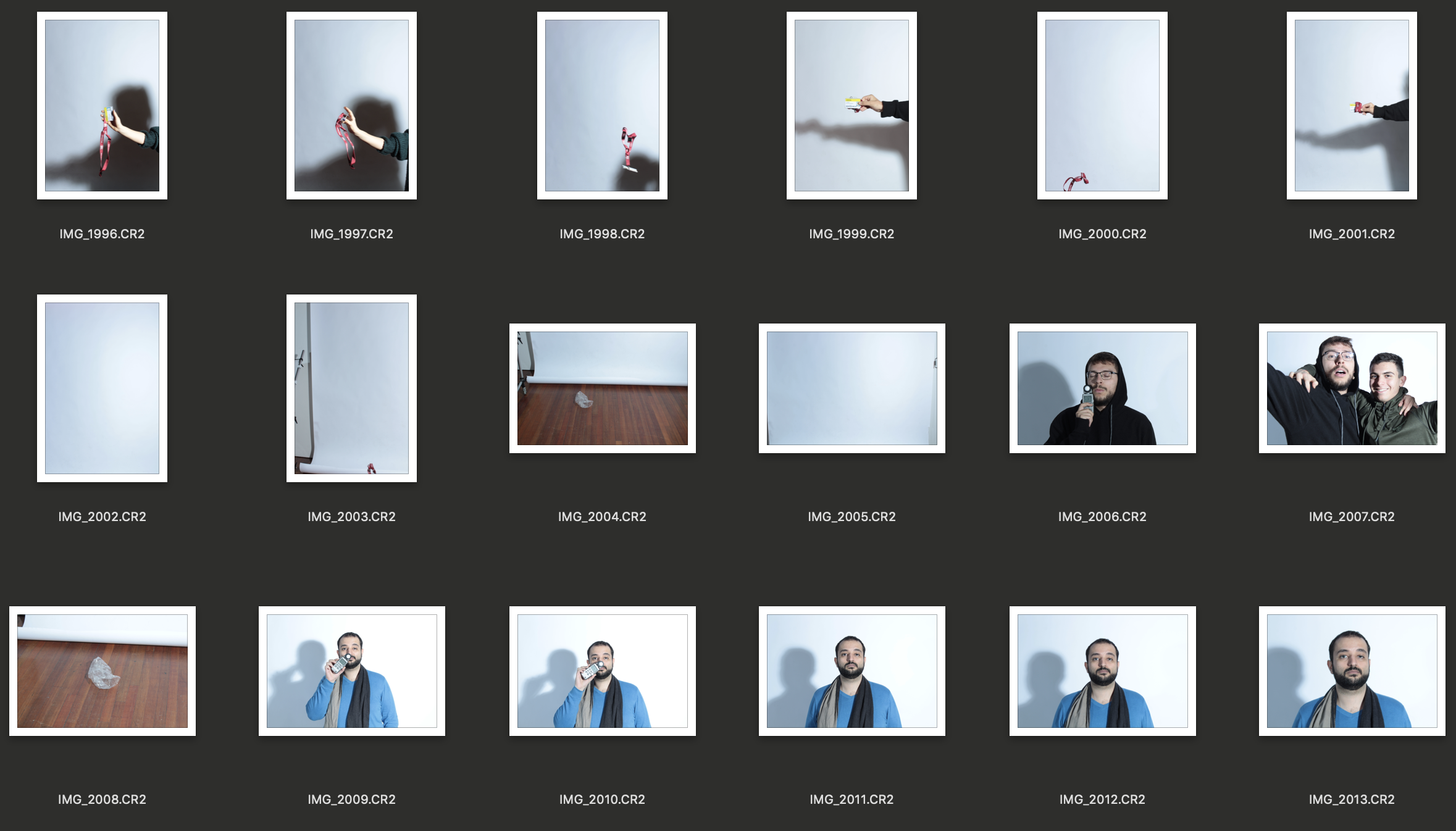
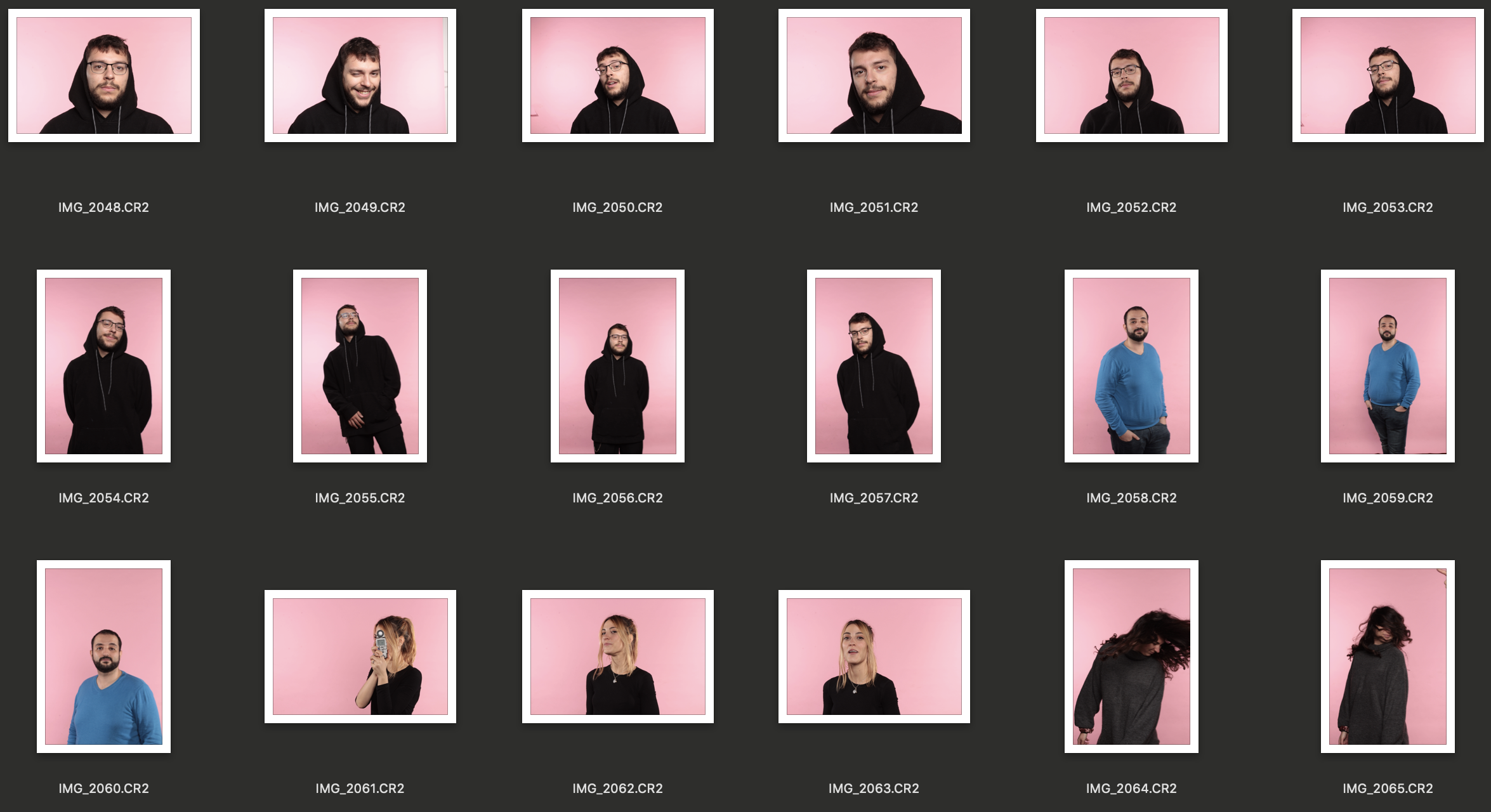
Introduction to the Photography Brief: Portraits.
I will need to find a theme from research to eventually produce 3 Portraits.
The workshop Start experimenting with Canon and Flash, Started with one flash, learning how to choose the strength. Finding the strength of the light with a light meter and finding the correct aperture.
Camera: Canon EOS 1300D Shutter speed at: 1/125 ISO at 100 Only changing the F number: Depending on the strenght of the flash being used.
After lucnh break we begin using 3 lights, exposing the background differently from the
names to research
Neil Leifer, Oaret Stern, Terence Donovan, George Holz Steve Mccurry